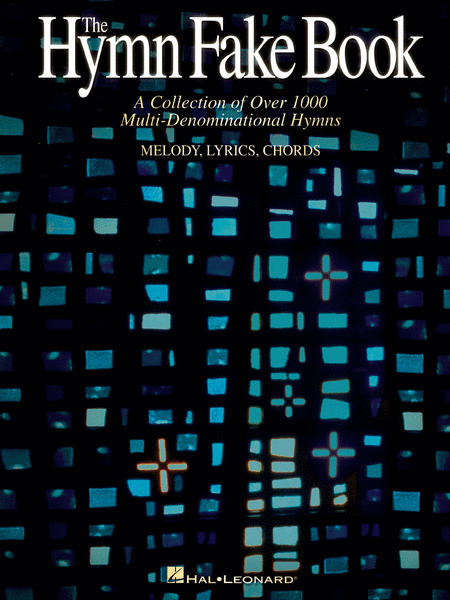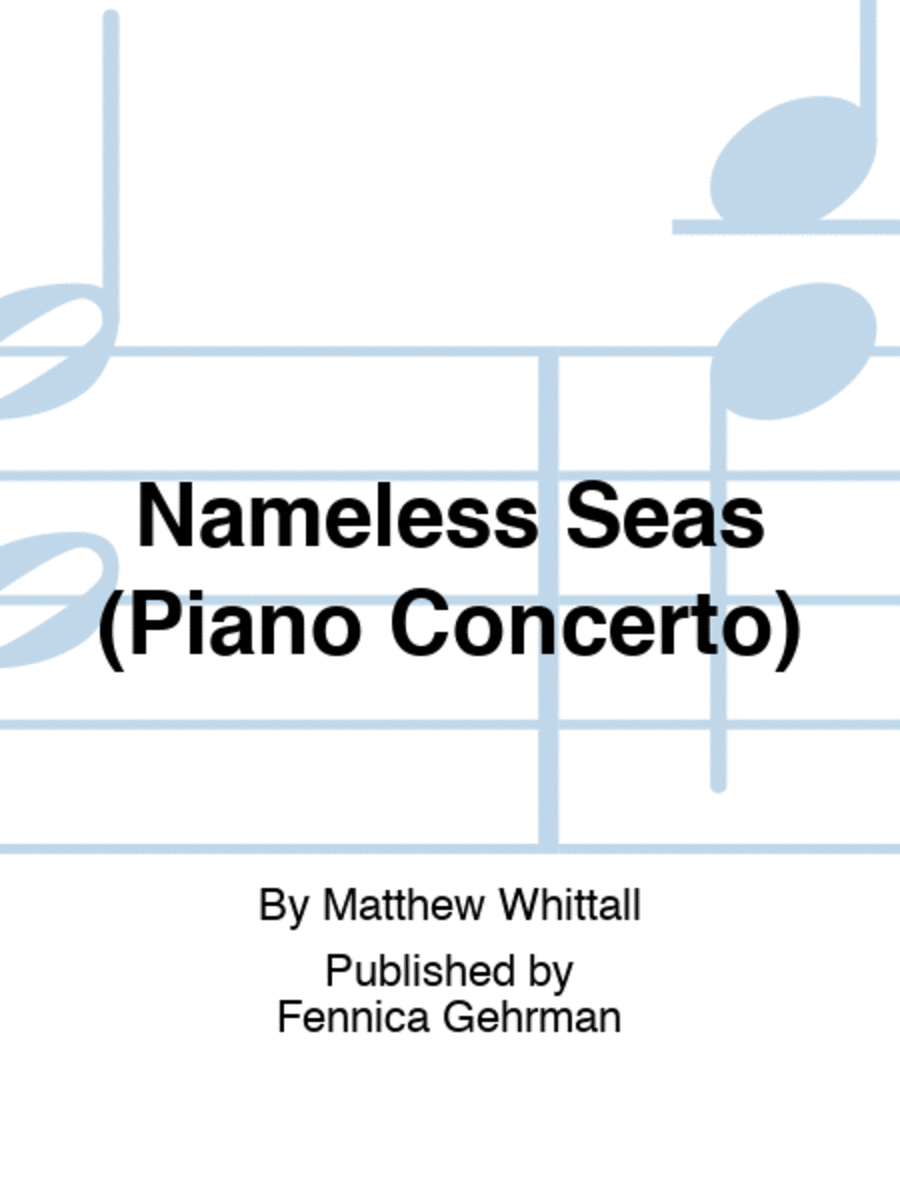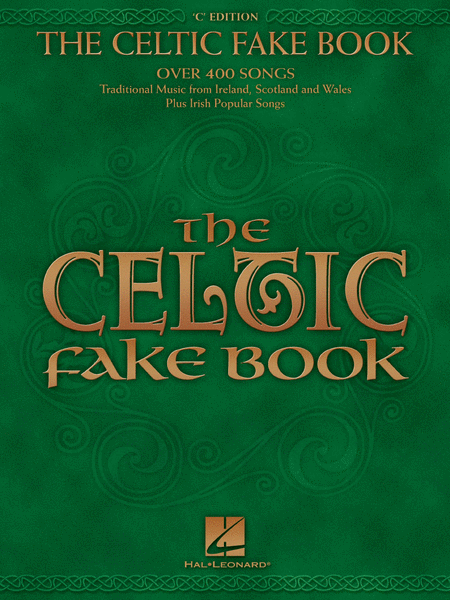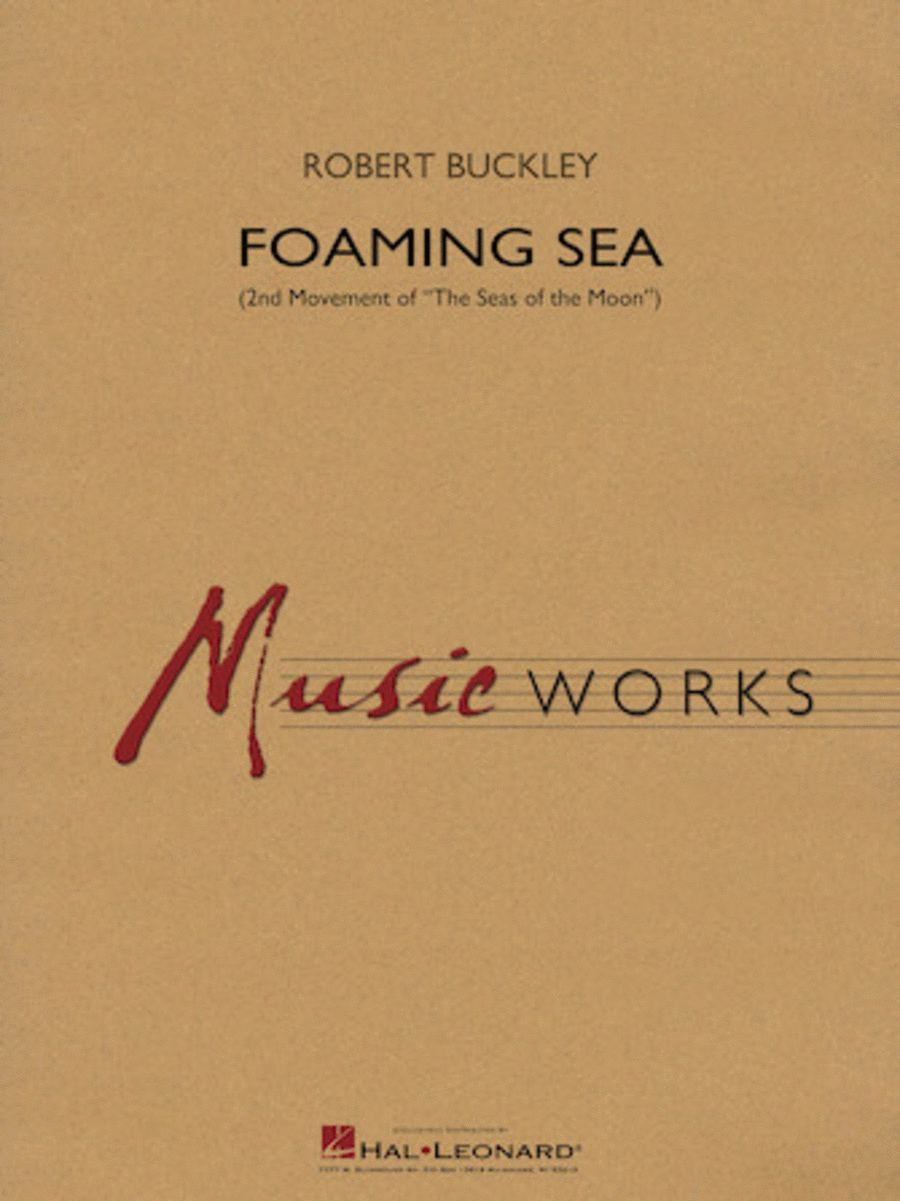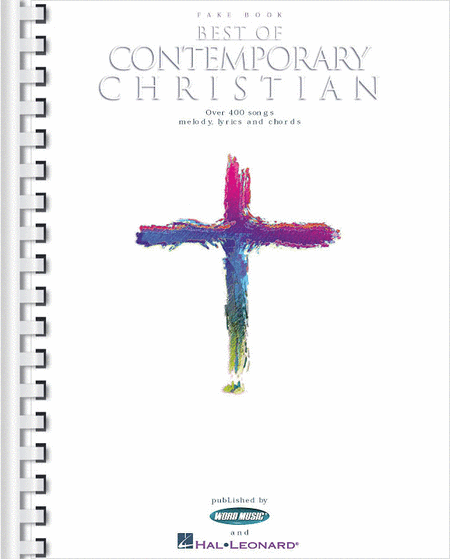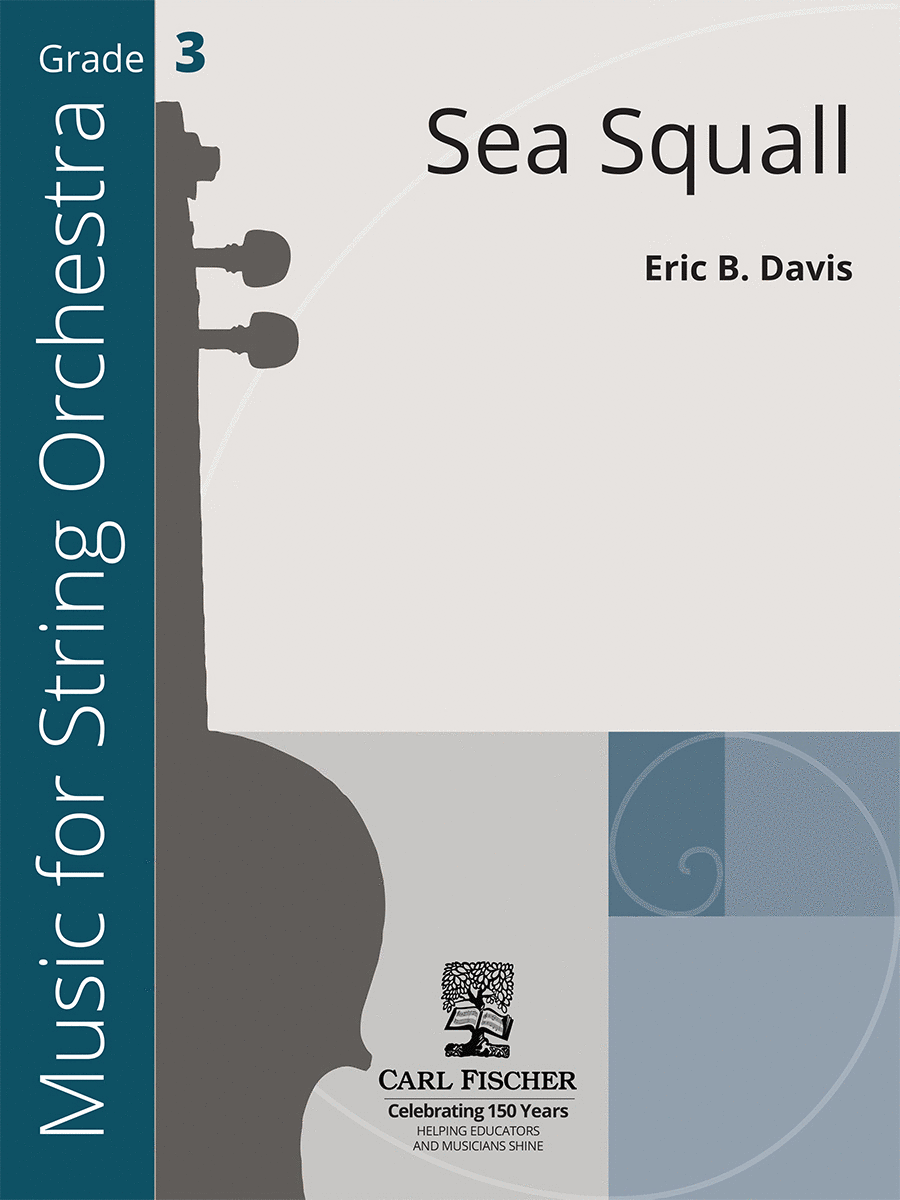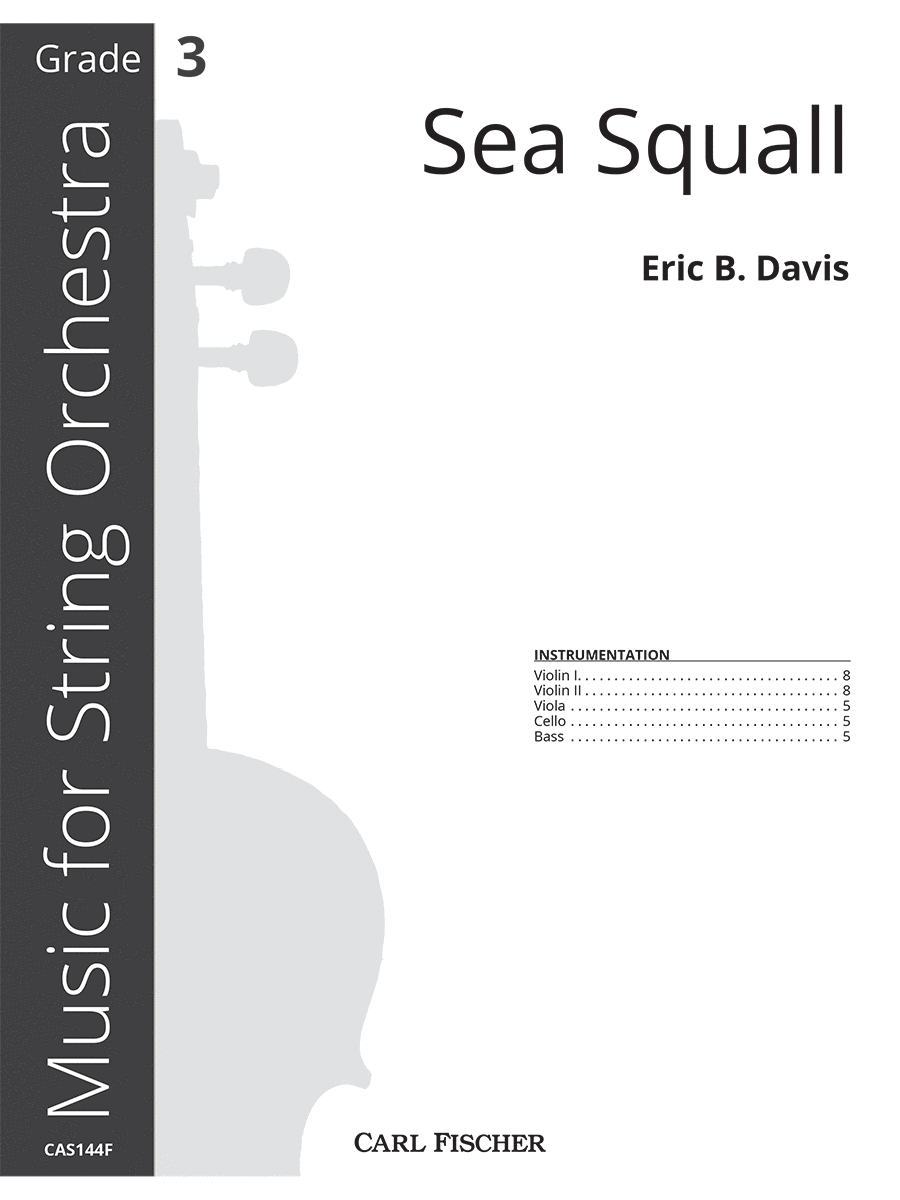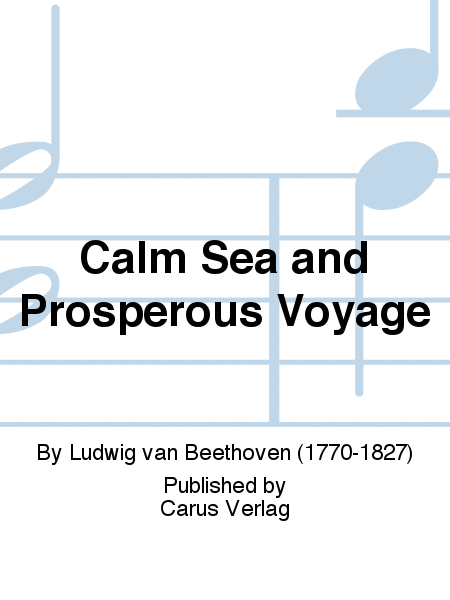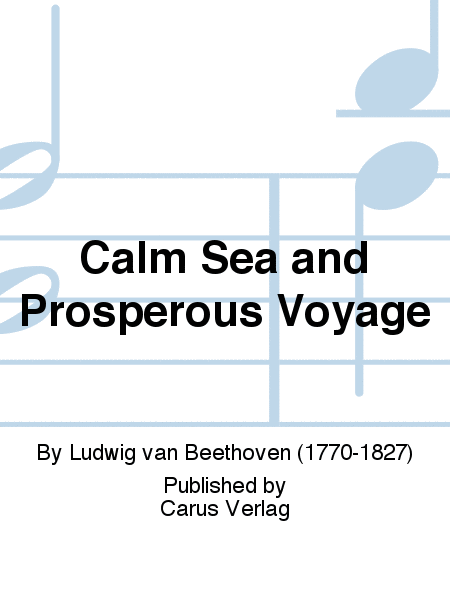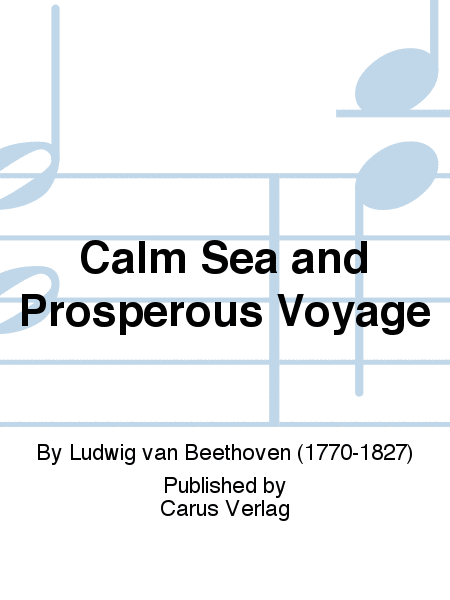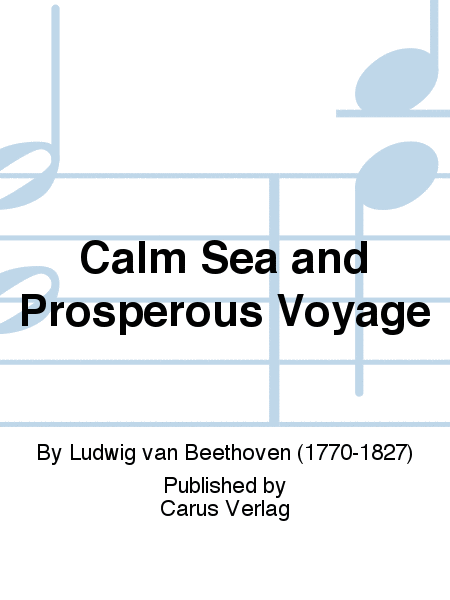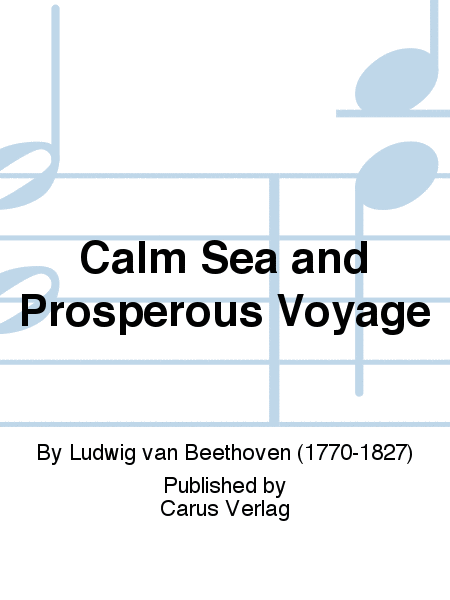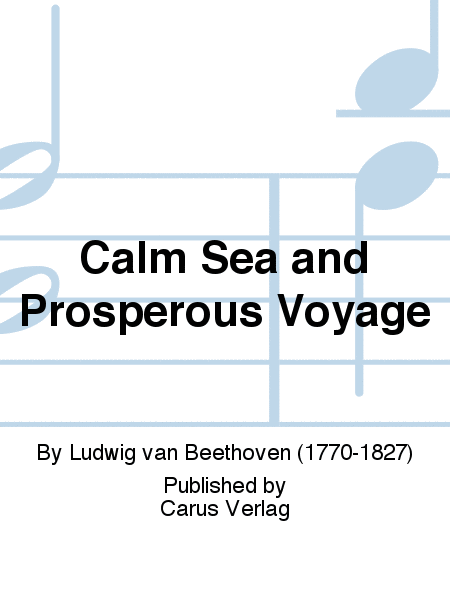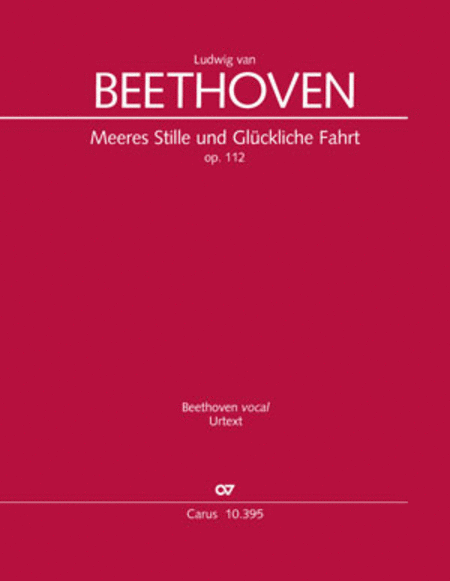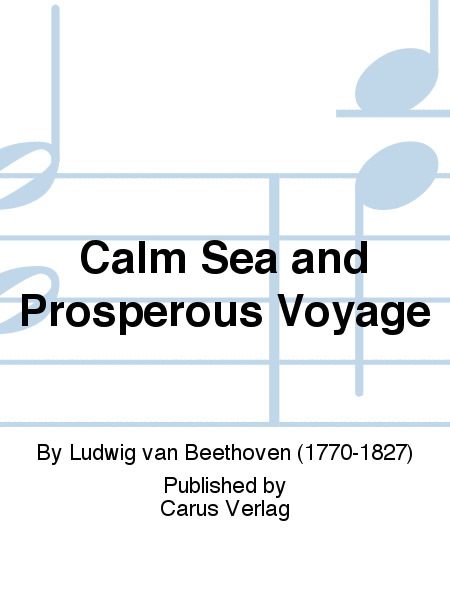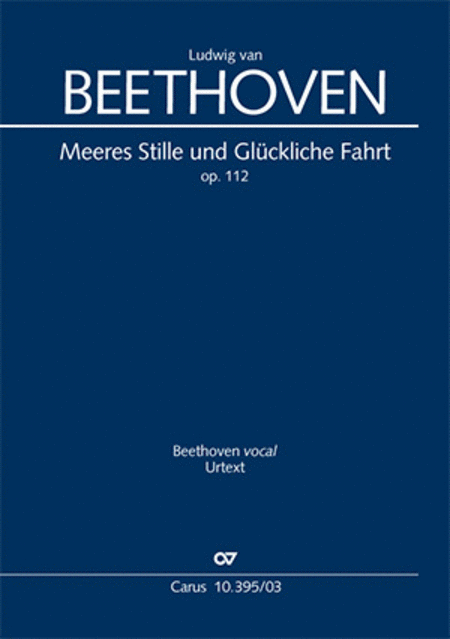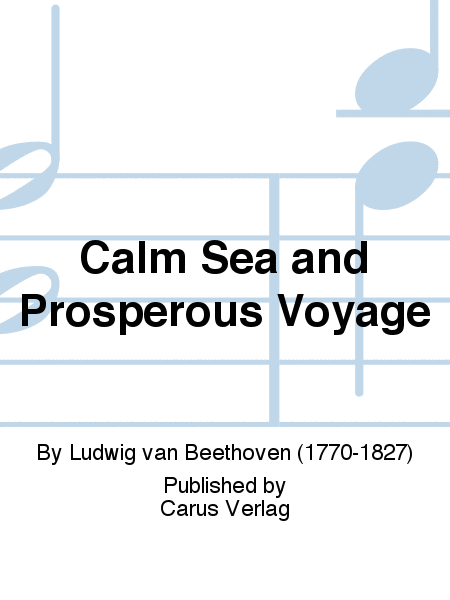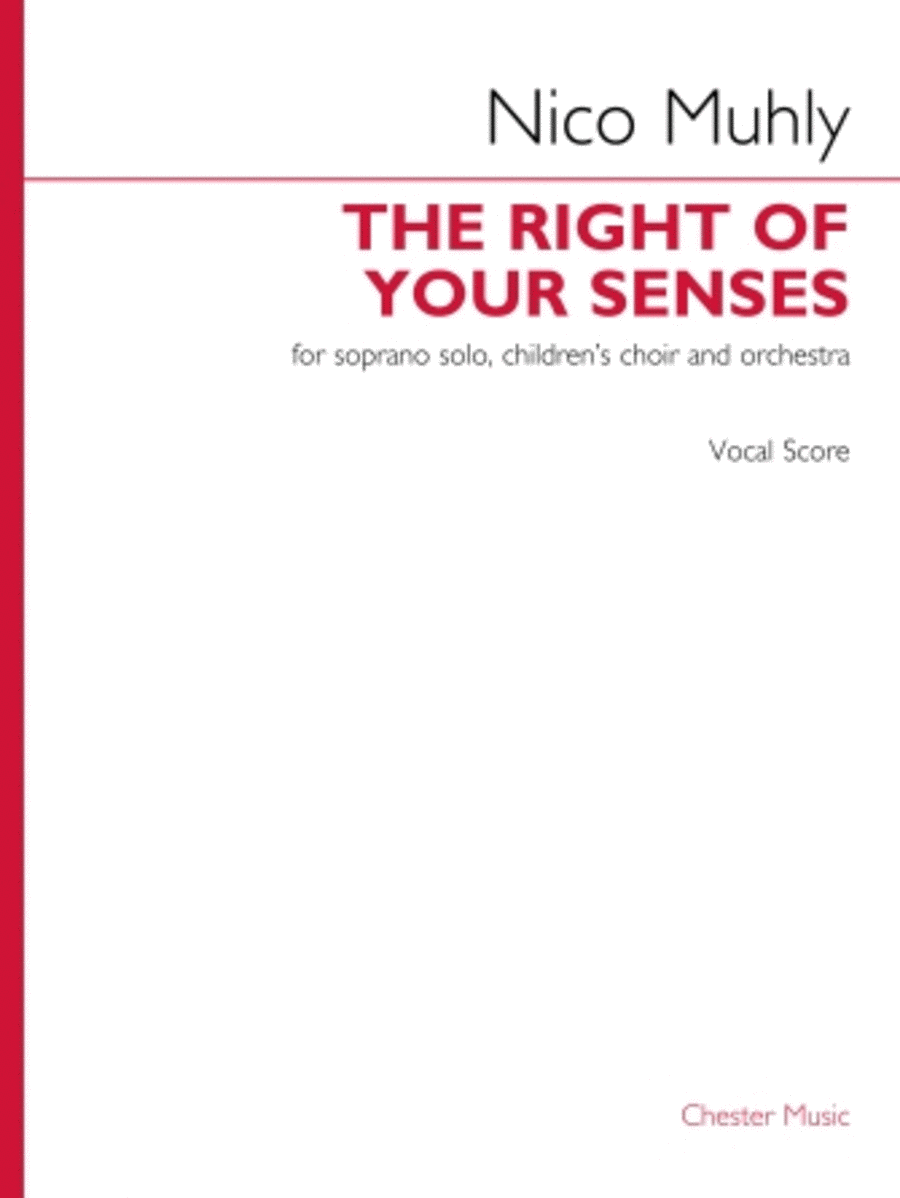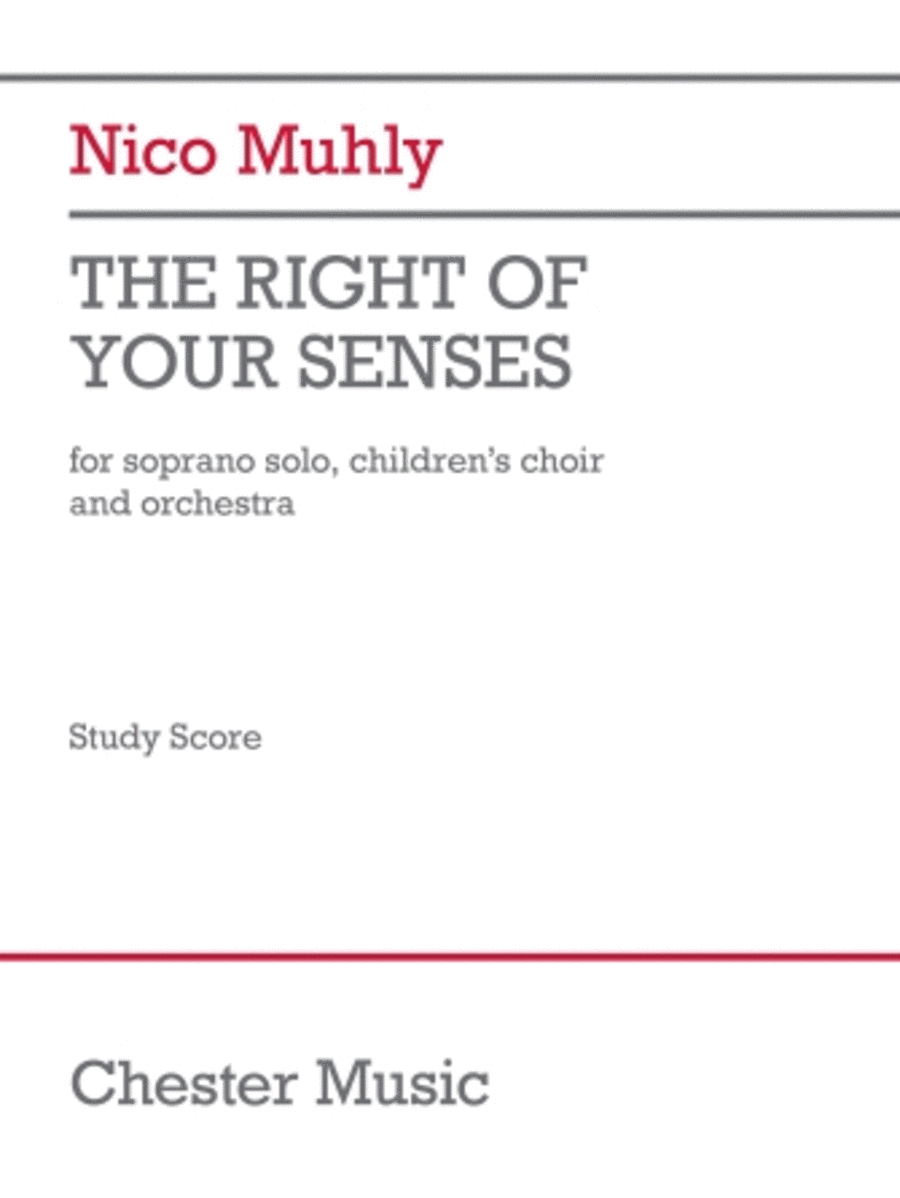|
| The Hymn Fake Book - C Edition
Ligne De Mélodie, Paroles et Accords [Fake Book] - Facile
Hal Leonard
For voice and C instrument. Format: fakebook (spiral bound). With vocal melody, ...(+)
For voice and C
instrument. Format:
fakebook (spiral bound).
With vocal melody,
lyrics, piano
accompaniment, chord
names and leadsheet
notation. Hymn. Series:
Hal Leonard Fake Books.
494 pages. 9x12 inches.
Published by Hal Leonard.
(3)$39.99 - Voir plus => AcheterDélais: 24 hours - In Stock | | | |
| Nameless Seas (Piano Concerto)
Piano et Orchestre
Fennica Gehrman
Piano and orchestra SKU: FG.55011-372-5 Composed by Matthew Whittall. Stu...(+)
Piano and orchestra
SKU:
FG.55011-372-5
Composed by Matthew
Whittall. Study score.
Fennica Gehrman
#55011-372-5. Published
by Fennica Gehrman
(FG.55011-372-5). ISBN
9790550113725. Imag
es of the sea figure
prominently throughout my
life and memories: from
holidays on the Atlantic
coast during my Canadian
childhood to my current
Baltic home, and the
imagined, only later
experienced Mediterranean
of my ancestral heritage.
As an immigrant (son of
an immigrant) bound to
two northern countries,
the sea is emblematic of
my twin homelands, from
the expanses of water
surrounding them to those
separating them. A Mari
usque ad Mare. The sea is
also an enduring image of
the unknown, of expanses
unexplored, of the raw
power of nature and, for
too many currently, of
terror holding a hope of
refuge - or the pain of
loss.
Such disparate
ideas were captured for
me in the seascapes of
the New York painter
MaryBeth Thielhelm, whom
I met in 2008 during a
residency on the Gulf of
Mexico. Her vast,
abstract, nearly
monochromatic depictions
of imaginary seas in
wildly varying moods were
the catalyst for a
concerto where the piano
is frequently far from a
hero battling a
collective, but rather
acts as a channel for
elemental forces surging
up from the orchestra,
floating - sometimes
barely so - on its
constantly shifting
surface. There are few
themes to speak of,
beyond a handful of
iconic ideas that
periodically cycle
upward. Rather, the
piano's material is
largely an ornamentation
of the more primal
rhythmic and harmonic
impulses from the
orchestra below - a
poetic interpretation, if
you will, of the more
immediate experience of
facing the vastness of
some unknown body of
water.
The title
Nameless Seas is borrowed
from one of Thielhelm's
exhibitions, as are those
of the four movements,
which are bridged
together into two halves
of roughly equal weight -
one rhapsodic and free,
the other more
single-minded and direct,
separated only by a short
breath. The opening
movement, Nocturne, is
predominantly calm, if
brooding, darkness and
light alternating
throughout. Lyrical
arabesques sparkle over
gently lapping
cross-currents in the
strings and mirrored
timpani, the piano's full
power only rarely
deployed. The waves
gradually build, drawing
in the full orchestra for
a meeting of forces in
Land and Sea, a brighter,
more warmly lyrical scene
that unfolds in series of
dreamlike, sometimes even
nostalgic visions, which
for me carry strong
memories of sitting on
rocks above surging
Atlantic waves. The third
movement, Wake, is a
fast, perpetual-motion
texture of glinting,
darting rhythms and
sudden shafts of light,
with a prominent part for
the steel drums, limning
the piano's quicksilver
figurations. An ecstatic
climax crashes into a
solo cadenza that grows
progressively calmer and
more introspective rather
than virtuosic. Much of
the tension finally
releases into Unclaimed
Waters, a drifting,
meditative seascape in
which the piano is
progressively engulfed by
a series of ever-taller
waves, ultimately
dissolving into a
tolling, rippling
continuum of sound.
It has been a great
privilege to realize such
a long-held dream as this
piece, and to write it
for not one, but two
great pianists.
Risto-Matti Marin and
Angela Hewitt, both of
whose friendship and
support have been
unfailing and humbling,
share the dedication.
Nameless Seas was
commissioned by the
PianoEspoo festival and
Canada's National Arts
Centre, with the
premieres in Ottawa and
Helsinki led by Hannu
Lintu and Olari Elts.
Thanks are due also to
the Jenny and Antti
Wihuri fund, whose
generous grant provided
me with much-needed time,
and Escape to Create in
Seaside, Florida, the
source to which I
returned to do a large
part of the work. $49.95 - Voir plus => AcheterDélais: 4 to 6 weeks | | | |
| The Celtic Fake Book
Fake Book [Fake Book]
Hal Leonard
C Edition. Fake Book (Includes melody line and chords). Size 9x12 inches. 256 pa...(+)
C Edition. Fake Book
(Includes melody line and
chords). Size 9x12
inches. 256 pages.
Published by Hal Leonard.
(2)$29.99 - Voir plus => AcheterDélais: 24 hours - In Stock | | | |
| Der beleidigte Papagei
Piano seul [Partition + CD]
Breitkopf & Härtel
11 Miniaturen. Composed by Claus Kuhnl. Edition Breitkopf. In these eleven s...(+)
11 Miniaturen. Composed
by
Claus Kuhnl. Edition
Breitkopf.
In these eleven short
piano
pieces, the composer
follows
the cue of such
modern-day
masters as Olivier
Messiaen,
Karlheinz Stockhausen,
Helmut
Lachenmann and Nicolaus
A.
Huber.
Pedagogical. Breitkopf
and
Haertel #EB-9175.
Published
by Breitkopf and Haertel
$28.95 - Voir plus => AcheterDélais: 3 to 4 weeks | | | |
| Foaming Sea
Orchestre d'harmonie - Intermédiaire
Hal Leonard
Concert Band (Score) - Grade 4 SKU: HL.4005562 2nd Movement of The Sea...(+)
Concert Band (Score) -
Grade 4 SKU:
HL.4005562 2nd
Movement of The Seas of
the the Moon.
Composed by Robert
Buckley. MusicWorks Grade
4. Concert. Softcover. 32
pages. Published by Hal
Leonard (HL.4005562).
UPC: 888680753375.
9.0x12.0x0.079
inches. From Robert
Buckley's grandly
cinematic suite
describing impressions of
the seas of the moon, the
second movement, Foaming
Sea, was inspired by the
composer watching the
ocean during a violent
storm with waves
exploding and crashing.
The sense of excitement
and exhilaration
eventually leads to the
calm after the storm, as
turbulent darkness gives
way to light. Dur:
4:40. $7.50 - Voir plus => AcheterDélais: 24 hours - In Stock | | | |
| Best of Contemporary Christian
Fake Book [Fake Book] - Intermédiaire
Hal Leonard
Over 400 Songs. Fake Book (Includes melody line and chords). Size 9x12 inches. 5...(+)
Over 400 Songs. Fake Book
(Includes melody line and
chords). Size 9x12
inches. 583 pages.
Published by Hal Leonard.
(4)$49.95 - Voir plus => AcheterDélais: 24 hours - In Stock | | | |
| Sea Squall - Facile
Carl Fischer
Orchestra Cello, Contrabass, Viola, Violin 1, Violin 2 - Grade 3 SKU: CF.CAS1...(+)
Orchestra Cello,
Contrabass, Viola, Violin
1, Violin 2 - Grade 3
SKU: CF.CAS144
Composed by Eric B.
Davis. Carl Fischer
Concert String Orchestra
Series. Set of Score and
Parts. 16+16+10+10+10+16
pages. Carl Fischer Music
#CAS144. Published by
Carl Fischer Music
(CF.CAS144). ISBN
9781491160527. UPC:
680160919116. Sea
Squall is about the
journey of a ship
traveling across
turbulent seas. It starts
with the primary melody
that comes back
frequently, with every
section having a turn
playing it. The context
of this theme changes as
the piece progresses.
Sometimes it is calm and
safe, and sometimes more
powerful, like a storm
with that lingering
feeling of
unpredictability. The
bowings and dynamics, as
well as what each section
is playing, changes the
mood and feeling of the
music, from calm to
animated to even heroic
in the louder areas.
There is a new theme
introduced later in the
cellos with the upper
parts following soon
after. The focus of the
player should be to bring
out these contrasts in
the parts by observing
the dynamics and
articulations.
Sea
Squall is about the
journey of a ship
traveling across
turbulent seas. It starts
with the primary melody
that comes back
frequently, with every
section having a turn
playing it. The context
of this theme changes as
the piece progresses.
Sometimes it is calm and
safe, and sometimes more
powerful, like a storm
with that lingering
feeling of
unpredictability.
Thebowings and dynamics,
as well as what each
section is playing,
changes the mood and
feeling of the music,
from calm to animated to
even heroic in the louder
areas. There is a new
theme introduced later in
the cellos with the upper
parts following soon
after. The focus of the
player should be to bring
out these contrasts in
the parts by observing
the dynamics and
articulations.
About Carl
Fischer Concert String
Orchestra
Series Thi
s series of pieces (Grade
3 and higher) is designed
for advancing ensembles.
The pieces in this series
are characterized
by: - Expanded use
of rhythms, ranges and
keys but technical
demands are still
carefully
considered
- More
comprehensive bowing
techniques
- Viola
T.C.
included
- Careful
selection of keys and
degree of difficulty for
advancing
musicians
$60.00 - Voir plus => AcheterDélais: 24 hours - In Stock | | | |
| Sea Squall [Conducteur] - Facile
Carl Fischer
Orchestra Cello, Contrabass, Viola, Violin 1, Violin 2 - Grade 3 SKU: CF.CAS1...(+)
Orchestra Cello,
Contrabass, Viola, Violin
1, Violin 2 - Grade 3
SKU: CF.CAS144F
Composed by Eric B.
Davis. Carl Fischer
Concert String Orchestra
Series. Full score. 16
pages. Carl Fischer Music
#CAS144F. Published by
Carl Fischer Music
(CF.CAS144F). ISBN
9781491160787. UPC:
680160919383. Sea
Squall is about the
journey of a ship
traveling across
turbulent seas. It starts
with the primary melody
that comes back
frequently, with every
section having a turn
playing it. The context
of this theme changes as
the piece progresses.
Sometimes it is calm and
safe, and sometimes more
powerful, like a storm
with that lingering
feeling of
unpredictability. The
bowings and dynamics, as
well as what each section
is playing, changes the
mood and feeling of the
music, from calm, to
animated, even heroic in
the louder areas. There
is a new theme introduced
later in the cellos with
the upper parts following
soon after. The focus of
the player should be to
bring out these contrasts
in the parts, by
observing the dynamics
and articulations.
Sea
Squall is about the
journey of a ship
traveling across
turbulent seas. It starts
with the primary melody
that comes back
frequently, with every
section having a turn
playing it. The context
of this theme changes as
the piece progresses.
Sometimes it is calm and
safe, and sometimes more
powerful, like a storm
with that lingering
feeling of
unpredictability.
Thebowings and dynamics,
as well as what each
section is playing,
changes the mood and
feeling of the music,
from calm, to animated,
even heroic in the louder
areas. There is a new
theme introduced later in
the cellos with the upper
parts following soon
after. The focus of the
player should be to bring
out these contrasts in
the parts, by observing
the dynamics and
articulations.
About Carl
Fischer Concert String
Orchestra
Series Thi
s series of pieces (Grade
3 and higher) is designed
for advancing ensembles.
The pieces in this series
are characterized
by: - Expanded use
of rhythms, ranges and
keys but technical
demands are still
carefully
considered
- More
comprehensive bowing
techniques
- Viola
T.C.
included
- Careful
selection of keys and
degree of difficulty for
advancing
musicians
$9.50 - Voir plus => AcheterDélais: 1 to 2 weeks | | | |
| San Pedro de Alcântara
Orchestre d'harmonie - Intermédiaire
Molenaar Edition
Concert Band - Grade 5 SKU: ML.013780090 Composed by Valdemar Gomes. Full...(+)
Concert Band - Grade 5
SKU: ML.013780090
Composed by Valdemar
Gomes. Full set. Molenaar
Edition #013780090.
Published by Molenaar
Edition (ML.013780090).
The Spanish war
galleon with 64 cannons,
built in Cuba between
1770 and 1771 for an
English shipowner in the
service of the King of
Spain left Peru for Cadiz
in 1784 with a huge cargo
of copper, gold, silver
and other valuables on
board. There were also
more than 400 people on
board, including
passengers, crew and Inca
prisoners after a revolt.
The Atlantic crossing
went smoothly, passing
Portugal to take
advantage of favourable
winds. The shipwreck off
Peniche was the result of
human error, apparently
due to French maps with
dramatic errors in the
position of the islands
of Berlengas and
neighbouring islets. On 2
February 1786, the sea
was calm and the night
clear, but they hit the
rock formation Papoa and
the hull immediately
broke in two. The bottom
sank quickly, while the
deck remained afloat for
some time. 128 people
lost their lives,
including many Indians
who were trapped in the
basement. This shipwreck
is considered one of the
most important in
maritime
history.
What the
composer wants to convey,
and what can be felt as
one listens, is first of
all the sound of power,
of hope, of the glory of
conquest, of the
splendour of wealth. This
is followed by the
perception of the
maritime environment, the
harmony with the softness
of the ocean, the gliding
of the hull in the foam
of the sea on sunny, blue
days. But along with this
tranquillity, you soon
hear a rhythmic chain
that makes you feel a
representation of the
hustle and bustle, of the
busy crew, of the hard
work of a sailor, of the
desperation of an exotic
people imprisoned in a
dark, damp cellar. A
distinct rhythm that
reminds us of the salero
of Andalusia, with its
Arab influences and its
people, the soothing of
the resignation of others
who are forced to submit.
Then we clearly hear a
crescendo that makes us
imagine the agony of the
collision that precedes
the shipwreck. The
breaking of the hull, the
water flooding
everything, the despair,
the clash of bodies on
the rocks, the tragedy to
come. Before the grand
finale, in which the
return of musical
softness reminds us that
the story is over. The
supremacy of nature over
human greed. The waves,
though gentle, sweep the
wreckage, the lives and
the treasures of the New
World to the bottom of
the sea.
Het
Spaans oorlogsgaljoen met
64 kanonnen, gebouwd in
Cuba tussen 1770 en 1771
voor een Engelse reder in
dienst van de koning van
Spanje vertrok in 1784
vanuit Peru naar Cádiz
met een enorme lading
koper, goud, zilver en
andere kostbaarheden aan
boord. Er waren ook meer
dan 400 mensen aan boord,
waaronder passagiers,
bemanning en Inca
gevangenen na een
opstand. De oversteek van
de Atlantische Oceaan
verliep vlot, waarbij
Portugal werd gepasseerd
om te profiteren van
gunstige winden. De
schipbreuk bij Peniche
was het resultaat van een
menselijke fout,
blijkbaar te wijten aan
Franse kaarten met
dramatische fouten in de
positie van de eilanden
Berlengas en naburige
eilandjes. Op 2 februari
1786 was de zee kalm en
de nacht helder, maar ze
raakten de rotsformatie
Papoa en de romp brak
onmiddellijk in tweeën.
De bodem zonk snel,
terwijl het dek nog enige
tijd bleef drijven. 128
mensen verloren het
leven, waaronder veel
indianen die vastzaten in
de kelder. Dit
scheepswrak wordt
beschouwd als een van de
belangrijkste in de
maritieme
geschiedenis.
Wat
de componist wil
overbrengen, en wat men
kan voelen als men
luistert, is allereerst
het geluid van macht, van
hoop, van de glorie van
verovering, van de pracht
van rijkdom. Dit wordt
gevolgd door de perceptie
van de maritieme
omgeving, de harmonie met
de zachtheid van de
oceaan, het glijden van
de romp in het schuim van
de zee op zonnige, blauwe
dagen. Maar samen met
deze rust hoor je al snel
een ritmische ketting die
je een voorstelling geeft
van de drukte, van de
drukke bemanning, van het
harde werk van een
zeeman, van de wanhoop
van een exotisch volk dat
gevangen zit in een
donkere, vochtige kelder.
Een duidelijk ritme dat
ons doet denken aan de
salero van Andalusië,
met zijn Arabische
invloeden en zijn mensen,
het sussen van de
berusting van anderen die
gedwongen worden zich te
onderwerpen. Dan horen we
duidelijk een crescendo
dat ons de lijdensweg
doet voorstellen van de
aanvaring die voorafgaat
aan de schipbreuk. Het
breken van de romp, het
water dat alles
overspoelt, de wanhoop,
het botsen van lichamen
op de rotsen, de tragedie
die komen gaat. Vóór de
grote finale, waarin de
terugkeer van de muzikale
zachtheid ons eraan
herinnert dat het verhaal
voorbij is. De overmacht
van de natuur over de
hebzucht van de mens. De
golven, hoewel zacht,
vegen het wrak, de levens
en de schatten van de
Nieuwe Wereld naar de
bodem van de
zee.
Le galion de
guerre espagnol de 64
canons, construit à Cuba
entre 1770 et 1771 pour
un armateur anglais au
service du roi d'Espagne,
a quitté le Pérou pour
Cadix en 1784 avec à son
bord une énorme
cargaison de cuivre,
d'or, d'argent et
d'autres objets de
valeur. Il y avait
également plus de 400
personnes à bord, dont
des passagers, des
membres d'équipage et
des prisonniers incas à
la suite d'une révolte.
La traversée de
l'Atlantique s'est
déroulée sans encombre,
en passant par le
Portugal pour profiter
des vents favorables. Le
naufrage au large de
Peniche est le résultat
d'une erreur humaine,
apparemment due à des
cartes françaises
comportant des erreurs
dramatiques dans la
position des îles de
Berlengas et des îlots
voisins. Le 2 février
1786, alors que la mer
est calme et la nuit
claire, le navire heurte
la formation rocheuse de
Papoa et la coque se
brise immédiatement en
deux. Le fond coule
rapidement, tandis que le
pont reste à flot
pendant un certain temps.
128 personnes ont perdu
la vie, dont de nombreux
Indiens qui étaient
coincés dans les
sous-sols. Ce naufrage
est considéré comme
l'un des plus importants
de l'histoire
maritime.
Ce que
le compositeur veut
transmettre, et ce que
l'on ressent à
l'écoute, c'est d'abord
le son de la puissance,
de l'espoir, de la gloire
de la conquête, de la
splendeur de la richesse.
C'est ensuite la
perception de
l'environnement maritime,
l'harmonie avec la
douceur de l'océan, le
glissement de la coque
dans l'écume de la mer
par des journées bleues
et ensoleillées. Mais à
côté de cette
tranquillité, on entend
bientôt une chaîne
rythmique qui nous fait
ressentir une
représentation de
l'agitation, de
l'équipage affairé, du
dur labeur d'un marin, du
désespoir d'un peuple
exotique emprisonné dans
une cave sombre et
humide. Un rythme
distinct qui nous
rappelle le salero
d'Andalousie, avec ses
influences arabes et son
peuple, l'apaisement de
la résignation des
autres qui sont obligés
de se soumettre. Puis on
entend clairement un
crescendo qui nous fait
imaginer l'agonie de la
collision qui précède
le naufrage. La rupture
de la coque, l'eau qui
envahit tout, le
désespoir, le choc des
corps sur les rochers, la
tragédie à venir. Avant
le grand final, où le
retour de la douceur
musicale nous rappelle
que l'histoire est
terminée. La suprématie
de la nature sur la
cupidité humaine. Les
vagues, bien que douces,
emportent les épaves,
les vies et les trésors
du Nouveau Monde au fond
de la mer.
Die
spanische Kriegsgaleone
mit 64 Kanonen, die
zwischen 1770 und 1771
auf Kuba für einen
englischen Reeder im
Dienste des spanischen
Königs gebaut wurde,
verließ Peru 1784 in
Richtung Cádiz mit einer
riesigen Ladung Kupfer,
Gold, Silber und anderen
Wertgegenständen an
Bord. An Bord befanden
sich auch mehr als 400
Menschen, darunter
Passagiere,
Besatzungsmitglieder und
Inka-Gefangene nach einem
Aufstand. Die
Atlantiküberquerung
verlief reibungslos,
wobei Portugal passiert
wurde, um die günstigen
Winde zu nutzen. Der
Schiffbruch vor Peniche
war das Ergebnis
menschlichen Versagens,
das offenbar auf
französische Karten
zurückzuführen war, die
in Bezug auf die Position
der Inseln Berlengas und
der benachbarten Eilande
dramatische Fehler
enthielten. Am 2. Februar
1786 stießen sie bei
ruhiger See und klarer
Nacht auf die
Felsformation Papoa und
der Rumpf brach sofort
entzwei. Der Boden sank
schnell, während das
Deck noch einige Zeit
über Wasser blieb. 128
Menschen kamen ums Leben,
darunter viele Indianer,
die im Keller
eingeschlossen waren.
Dieses Schiffswrack gilt
als eines der
bedeutendsten
Was
der Komponist vermitteln
will und was man beim
Zuhören spürt, ist
zunächst der Klang der
Macht, der Hoffnung, des
Ruhms der Eroberung, des
Glanzes des Reichtums. Es
folgt die Wahrnehmung der
maritimen Umgebung, die
Harmonie mit der
Sanftheit des Meeres, das
Gleiten des
Schiffsrumpfes im Schaum
des Meeres an sonnigen,
blauen Tagen. Doch neben
dieser Ruhe hört man
bald eine rhythmische
Kette, die die Hektik,
die geschäftige
Mannschaft, die harte
Arbeit eines Seemanns,
die Verzweiflung eines
exotischen Volkes, das in
einem dunklen, feuchten
Keller gefangen ist,
wiedergibt. Ein
ausgeprägter Rhythmus,
der an den Salero
Andalusiens erinnert, mit
seinen arabischen
Einflüssen und seinen
Menschen, der die
Resignation der anderen
besänftigt, die
gezwungen sind, sich zu
fügen. Dann hören wir
deutlich ein Crescendo,
das uns die Qualen des
Zusammenstoßes, der dem
Schiffbruch vorausgeht,
erahnen lässt. Das
Zerbrechen des Rumpfes,
das Wasser, das alles
überflutet, die
Verzweiflung, das
Aufeinanderprallen der
Körper auf den Felsen,
die bevorstehende
Tragödie. Vor dem
großen Finale, in dem
die Rückkehr der
musikalischen Sanftheit
uns daran erinnert, dass
die Geschichte zu Ende
ist. Die Vorherrschaft
der Natur über die
menschliche Gier. Die
Wellen, so sanft sie auch
sein mögen, spülen die
Trümmer, das Leben und
die Schätze der Neuen
Welt auf den Grund des
Meeres. $209.95 - Voir plus => AcheterDélais: 4 to 6 weeks | | | |
| Calm Sea and Prosperous Voyage [Conducteur et Parties séparées]
Carus Verlag
Orchestra Coro SATB, 2 Fl, 2 Ob, 2 Clt, 2 Fg, 4 Cor, 2 Tr, Timp, 2 Vl, Va, Vc, C...(+)
Orchestra Coro SATB, 2
Fl, 2 Ob, 2 Clt, 2 Fg, 4
Cor, 2 Tr, Timp, 2 Vl,
Va, Vc, Cb SKU:
CA.1039509 Composed
by Ludwig van Beethoven.
Edited by Sven Hiemke. 1x
10.395/21 flute 1, 1x
10.395/22 flute 2, 1x
10.395/23 oboe 1, 1x
10.395/24 oboe 2, 1x
10.395/25 clarinet 1, 1x
10.395/26 clarinet 2, 1x
10.395/27 bassoon 1, 1x
10.395/28 bassoon 2, 1x
10.395/31 horn 1, 1x
10.395/32 horn 2, 1x
10.395/33 horn 3, 1x
10.39. Harmony parts.
Secular choral music. Set
of Orchestra Parts. Op.
112. Duration 8 minutes.
Carus Verlag #CV
10.395/09. Published by
Carus Verlag
(CA.1039509). ISBN
9790007245320. Language:
German. Beethoven's
Meeres Stille und
Gluckliche Fahrt (Calm
Sea and Prosperous
Voyage) op. 112 for
four-part mixed chorus
and symphony orchestra -
his setting of a pair of
poems by Johann Wolfgang
von Goethe - defies
straightforward
categorization, but can
best be described as a
choral ode. Beethoven in
fact never voyaged by
sea, but his composition,
premiered in 1815,
continues to surprise
even today. He depicted
in music the smooth
surface of the motionless
water and the oppressive
calm, which meant nothing
other than being
becalmed, a delayed
voyage, and short rations
in the era of sailing,
with the same intensity
as a freshening
increasing wind, with
which Aeolus, the God of
the winds, ultimately
enabled the longed-for
prosperous voyage to take
place. The composed
calmness of the
motionless sea is
conveyed in the low
register used throughout,
in which the chorus sings
the first poem
accompanied by washes of
pianissimo sounds on the
strings. There is a
surprising moment with
the musical portrayal of
the ungeheuere Weite
(immense breadth), at
which the
vocal-instrumental
writing suddenly
crescendos to forte and
unfolds into a texture of
over five octaves. By
contrast Gluckliche Fahrt
is written in
restlessly-compiled
meters, whose musical
setting in flowing
movement with diatonic
scale passages evokes
happy excitement and
confidence. The work was
dedicated to Johann
Wolfgang von Goethe, whom
Beethoven greatly admired
throughout his life. The
work has now been
published in a new
critical edition based on
the first printed edition
and the performance score
which Beethoven himself
checked and corrected.
Score and parts available
separately - see item
CA.1039500. $57.95 - Voir plus => AcheterDélais: 2 to 3 weeks | | | |
| Calm Sea and Prosperous Voyage [Conducteur et Parties séparées]
Carus Verlag
Orchestra Coro SATB, 2 Fl, 2 Ob, 2 Clt, 2 Fg, 4 Cor, 2 Tr, Timp, 2 Vl, Va, Vc, C...(+)
Orchestra Coro SATB, 2
Fl, 2 Ob, 2 Clt, 2 Fg, 4
Cor, 2 Tr, Timp, 2 Vl,
Va, Vc, Cb SKU:
CA.1039519 Composed
by Ludwig van Beethoven.
Edited by Sven Hiemke.
Complete orchestral
parts. Secular choral
music. Set of Orchestra
Parts. Op. 112. Duration
8 minutes. Carus Verlag
#CV 10.395/19. Published
by Carus Verlag
(CA.1039519). ISBN
9790007245382. Language:
German. Beethoven's
Meeres Stille und
Gluckliche Fahrt (Calm
Sea and Prosperous
Voyage) op. 112 for
four-part mixed chorus
and symphony orchestra -
his setting of a pair of
poems by Johann Wolfgang
von Goethe - defies
straightforward
categorization, but can
best be described as a
choral ode. Beethoven in
fact never voyaged by
sea, but his composition,
premiered in 1815,
continues to surprise
even today. He depicted
in music the smooth
surface of the motionless
water and the oppressive
calm, which meant nothing
other than being
becalmed, a delayed
voyage, and short rations
in the era of sailing,
with the same intensity
as a freshening
increasing wind, with
which Aeolus, the God of
the winds, ultimately
enabled the longed-for
prosperous voyage to take
place. The composed
calmness of the
motionless sea is
conveyed in the low
register used throughout,
in which the chorus sings
the first poem
accompanied by washes of
pianissimo sounds on the
strings. There is a
surprising moment with
the musical portrayal of
the ungeheuere Weite
(immense breadth), at
which the
vocal-instrumental
writing suddenly
crescendos to forte and
unfolds into a texture of
over five octaves. By
contrast Gluckliche Fahrt
is written in
restlessly-compiled
meters, whose musical
setting in flowing
movement with diatonic
scale passages evokes
happy excitement and
confidence. The work was
dedicated to Johann
Wolfgang von Goethe, whom
Beethoven greatly admired
throughout his life. The
work has now been
published in a new
critical edition based on
the first printed edition
and the performance score
which Beethoven himself
checked and corrected.
Score and parts available
separately - see item
CA.1039500. $156.95 - Voir plus => AcheterDélais: 2 to 3 weeks | | | |
| Calm Sea and Prosperous Voyage
Carus Verlag
Orchestra Coro SATB, 2 Fl, 2 Ob, 2 Clt, 2 Fg, 4 Cor, 2 Tr, Timp, 2 Vl, Va, Vc, C...(+)
Orchestra Coro SATB, 2
Fl, 2 Ob, 2 Clt, 2 Fg, 4
Cor, 2 Tr, Timp, 2 Vl,
Va, Vc, Cb SKU:
CA.1039514 Composed
by Ludwig van Beethoven.
Edited by Sven Hiemke.
Violoncello. Secular
choral music. Single
Part, Cello. Op. 112. 4
pages. Duration 8
minutes. Carus Verlag #CV
10.395/14. Published by
Carus Verlag
(CA.1039514). ISBN
9790007245368. Language:
German. Beethoven's
Meeres Stille und
Gluckliche Fahrt (Calm
Sea and Prosperous
Voyage) op. 112 for
four-part mixed chorus
and symphony orchestra -
his setting of a pair of
poems by Johann Wolfgang
von Goethe - defies
straightforward
categorization, but can
best be described as a
choral ode. Beethoven in
fact never voyaged by
sea, but his composition,
premiered in 1815,
continues to surprise
even today. He depicted
in music the smooth
surface of the motionless
water and the oppressive
calm, which meant nothing
other than being
becalmed, a delayed
voyage, and short rations
in the era of sailing,
with the same intensity
as a freshening
increasing wind, with
which Aeolus, the God of
the winds, ultimately
enabled the longed-for
prosperous voyage to take
place. The composed
calmness of the
motionless sea is
conveyed in the low
register used throughout,
in which the chorus sings
the first poem
accompanied by washes of
pianissimo sounds on the
strings. There is a
surprising moment with
the musical portrayal of
the ungeheuere Weite
(immense breadth), at
which the
vocal-instrumental
writing suddenly
crescendos to forte and
unfolds into a texture of
over five octaves. By
contrast Gluckliche Fahrt
is written in
restlessly-compiled
meters, whose musical
setting in flowing
movement with diatonic
scale passages evokes
happy excitement and
confidence. The work was
dedicated to Johann
Wolfgang von Goethe, whom
Beethoven greatly admired
throughout his life. The
work has now been
published in a new
critical edition based on
the first printed edition
and the performance score
which Beethoven himself
checked and corrected.
Score and part available
separately - see item
CA.1039500. $6.95 - Voir plus => AcheterDélais: 2 to 3 weeks | | | |
| Calm Sea and Prosperous Voyage
Carus Verlag
Orchestra Coro SATB, 2 Fl, 2 Ob, 2 Clt, 2 Fg, 4 Cor, 2 Tr, Timp, 2 Vl, Va, Vc, C...(+)
Orchestra Coro SATB, 2
Fl, 2 Ob, 2 Clt, 2 Fg, 4
Cor, 2 Tr, Timp, 2 Vl,
Va, Vc, Cb SKU:
CA.1039505 Composed
by Ludwig van Beethoven.
Edited by Sven Hiemke.
Secular choral music.
Choral Score. Op. 112. 8
pages. Duration 8
minutes. Carus Verlag #CV
10.395/05. Published by
Carus Verlag
(CA.1039505). ISBN
9790007188139. Language:
German. Beethoven's
Meeres Stille und
Gluckliche Fahrt (Calm
Sea and Prosperous
Voyage) op. 112 for
four-part mixed chorus
and symphony orchestra -
his setting of a pair of
poems by Johann Wolfgang
von Goethe - defies
straightforward
categorization, but can
best be described as a
choral ode. Beethoven in
fact never voyaged by
sea, but his composition,
premiered in 1815,
continues to surprise
even today. He depicted
in music the smooth
surface of the motionless
water and the oppressive
calm, which meant nothing
other than being
becalmed, a delayed
voyage, and short rations
in the era of sailing,
with the same intensity
as a freshening
increasing wind, with
which Aeolus, the God of
the winds, ultimately
enabled the longed-for
prosperous voyage to take
place. The composed
calmness of the
motionless sea is
conveyed in the low
register used throughout,
in which the chorus sings
the first poem
accompanied by washes of
pianissimo sounds on the
strings. There is a
surprising moment with
the musical portrayal of
the ungeheuere Weite
(immense breadth), at
which the
vocal-instrumental
writing suddenly
crescendos to forte and
unfolds into a texture of
over five octaves. By
contrast Gluckliche Fahrt
is written in
restlessly-compiled
meters, whose musical
setting in flowing
movement with diatonic
scale passages evokes
happy excitement and
confidence. The work was
dedicated to Johann
Wolfgang von Goethe, whom
Beethoven greatly admired
throughout his life. The
work has now been
published in a new
critical edition based on
the first printed edition
and the performance score
which Beethoven himself
checked and corrected.
Score available
separately - see item
CA.1039500. $4.95 - Voir plus => AcheterDélais: 2 to 3 weeks | | | |
| Calm Sea and Prosperous Voyage
Carus Verlag
Orchestra Coro SATB, 2 Fl, 2 Ob, 2 Clt, 2 Fg, 4 Cor, 2 Tr, Timp, 2 Vl, Va, Vc, C...(+)
Orchestra Coro SATB, 2
Fl, 2 Ob, 2 Clt, 2 Fg, 4
Cor, 2 Tr, Timp, 2 Vl,
Va, Vc, Cb SKU:
CA.1039512 Composed
by Ludwig van Beethoven.
Edited by Sven Hiemke.
Violin 2. Secular choral
music. Single Part,
Violin 2. Op. 112. 4
pages. Duration 8
minutes. Carus Verlag #CV
10.395/12. Published by
Carus Verlag
(CA.1039512). ISBN
9790007245344. Language:
German. Beethoven's
Meeres Stille und
Gluckliche Fahrt (Calm
Sea and Prosperous
Voyage) op. 112 for
four-part mixed chorus
and symphony orchestra -
his setting of a pair of
poems by Johann Wolfgang
von Goethe - defies
straightforward
categorization, but can
best be described as a
choral ode. Beethoven in
fact never voyaged by
sea, but his composition,
premiered in 1815,
continues to surprise
even today. He depicted
in music the smooth
surface of the motionless
water and the oppressive
calm, which meant nothing
other than being
becalmed, a delayed
voyage, and short rations
in the era of sailing,
with the same intensity
as a freshening
increasing wind, with
which Aeolus, the God of
the winds, ultimately
enabled the longed-for
prosperous voyage to take
place. The composed
calmness of the
motionless sea is
conveyed in the low
register used throughout,
in which the chorus sings
the first poem
accompanied by washes of
pianissimo sounds on the
strings. There is a
surprising moment with
the musical portrayal of
the ungeheuere Weite
(immense breadth), at
which the
vocal-instrumental
writing suddenly
crescendos to forte and
unfolds into a texture of
over five octaves. By
contrast Gluckliche Fahrt
is written in
restlessly-compiled
meters, whose musical
setting in flowing
movement with diatonic
scale passages evokes
happy excitement and
confidence. The work was
dedicated to Johann
Wolfgang von Goethe, whom
Beethoven greatly admired
throughout his life. The
work has now been
published in a new
critical edition based on
the first printed edition
and the performance score
which Beethoven himself
checked and corrected.
Score and part available
separately - see item
CA.1039500. $6.95 - Voir plus => AcheterDélais: 2 to 3 weeks | | | |
| Calm Sea and Prosperous Voyage
Carus Verlag
Orchestra Coro SATB, 2 Fl, 2 Ob, 2 Clt, 2 Fg, 4 Cor, 2 Tr, Timp, 2 Vl, Va, Vc, C...(+)
Orchestra Coro SATB, 2
Fl, 2 Ob, 2 Clt, 2 Fg, 4
Cor, 2 Tr, Timp, 2 Vl,
Va, Vc, Cb SKU:
CA.1039511 Composed
by Ludwig van Beethoven.
Edited by Sven Hiemke.
Violin 1. Secular choral
music. Single Part,
Violin 1. Op. 112. 4
pages. Duration 8
minutes. Carus Verlag #CV
10.395/11. Published by
Carus Verlag
(CA.1039511). ISBN
9790007245337. Language:
German. Beethoven's
Meeres Stille und
Gluckliche Fahrt (Calm
Sea and Prosperous
Voyage) op. 112 for
four-part mixed chorus
and symphony orchestra -
his setting of a pair of
poems by Johann Wolfgang
von Goethe - defies
straightforward
categorization, but can
best be described as a
choral ode. Beethoven in
fact never voyaged by
sea, but his composition,
premiered in 1815,
continues to surprise
even today. He depicted
in music the smooth
surface of the motionless
water and the oppressive
calm, which meant nothing
other than being
becalmed, a delayed
voyage, and short rations
in the era of sailing,
with the same intensity
as a freshening
increasing wind, with
which Aeolus, the God of
the winds, ultimately
enabled the longed-for
prosperous voyage to take
place. The composed
calmness of the
motionless sea is
conveyed in the low
register used throughout,
in which the chorus sings
the first poem
accompanied by washes of
pianissimo sounds on the
strings. There is a
surprising moment with
the musical portrayal of
the ungeheuere Weite
(immense breadth), at
which the
vocal-instrumental
writing suddenly
crescendos to forte and
unfolds into a texture of
over five octaves. By
contrast Gluckliche Fahrt
is written in
restlessly-compiled
meters, whose musical
setting in flowing
movement with diatonic
scale passages evokes
happy excitement and
confidence. The work was
dedicated to Johann
Wolfgang von Goethe, whom
Beethoven greatly admired
throughout his life. The
work has now been
published in a new
critical edition based on
the first printed edition
and the performance score
which Beethoven himself
checked and corrected.
Score and part available
separately - see item
CA.1039500. $6.95 - Voir plus => AcheterDélais: 2 to 3 weeks | | | |
| Calm Sea and Prosperous Voyage [Conducteur]
Carus Verlag
Orchestra Coro SATB, 2 Fl, 2 Ob, 2 Clt, 2 Fg, 4 Cor, 2 Tr, Timp, 2 Vl, Va, Vc, C...(+)
Orchestra Coro SATB, 2
Fl, 2 Ob, 2 Clt, 2 Fg, 4
Cor, 2 Tr, Timp, 2 Vl,
Va, Vc, Cb SKU:
CA.1039500 Composed
by Ludwig van Beethoven.
Edited by Sven Hiemke.
Secular choral music.
Full score. Op. 112. 44
pages. Duration 8
minutes. Carus Verlag #CV
10.395/00. Published by
Carus Verlag
(CA.1039500). ISBN
9790007188115. Language:
German. Beethoven's
Meeres Stille und
Gluckliche Fahrt (Calm
Sea and Prosperous
Voyage) op. 112 for
four-part mixed chorus
and symphony orchestra -
his setting of a pair of
poems by Johann Wolfgang
von Goethe - defies
straightforward
categorization, but can
best be described as a
choral ode. Beethoven in
fact never voyaged by
sea, but his composition,
premiered in 1815,
continues to surprise
even today. He depicted
in music the smooth
surface of the motionless
water and the oppressive
calm, which meant nothing
other than being
becalmed, a delayed
voyage, and short rations
in the era of sailing,
with the same intensity
as a freshening
increasing wind, with
which Aeolus, the God of
the winds, ultimately
enabled the longed-for
prosperous voyage to take
place. The composed
calmness of the
motionless sea is
conveyed in the low
register used throughout,
in which the chorus sings
the first poem
accompanied by washes of
pianissimo sounds on the
strings. There is a
surprising moment with
the musical portrayal of
the ungeheuere Weite
(immense breadth), at
which the
vocal-instrumental
writing suddenly
crescendos to forte and
unfolds into a texture of
over five octaves. By
contrast Gluckliche Fahrt
is written in
restlessly-compiled
meters, whose musical
setting in flowing
movement with diatonic
scale passages evokes
happy excitement and
confidence. The work was
dedicated to Johann
Wolfgang von Goethe, whom
Beethoven greatly admired
throughout his life. The
work has now been
published in a new
critical edition based on
the first printed edition
and the performance score
which Beethoven himself
checked and
corrected. $38.95 - Voir plus => AcheterDélais: 2 to 3 weeks | | | |
| Calm Sea and Prosperous Voyage
Carus Verlag
Orchestra Coro SATB, 2 Fl, 2 Ob, 2 Clt, 2 Fg, 4 Cor, 2 Tr, Timp, 2 Vl, Va, Vc, C...(+)
Orchestra Coro SATB, 2
Fl, 2 Ob, 2 Clt, 2 Fg, 4
Cor, 2 Tr, Timp, 2 Vl,
Va, Vc, Cb SKU:
CA.1039515 Composed
by Ludwig van Beethoven.
Edited by Sven Hiemke.
Double bass. Secular
choral music. Single
Part, Double Bass. Op.
112. 4 pages. Duration 8
minutes. Carus Verlag #CV
10.395/15. Published by
Carus Verlag
(CA.1039515). ISBN
9790007245375. Language:
German. Beethoven's
Meeres Stille und
Gluckliche Fahrt (Calm
Sea and Prosperous
Voyage) op. 112 for
four-part mixed chorus
and symphony orchestra -
his setting of a pair of
poems by Johann Wolfgang
von Goethe - defies
straightforward
categorization, but can
best be described as a
choral ode. Beethoven in
fact never voyaged by
sea, but his composition,
premiered in 1815,
continues to surprise
even today. He depicted
in music the smooth
surface of the motionless
water and the oppressive
calm, which meant nothing
other than being
becalmed, a delayed
voyage, and short rations
in the era of sailing,
with the same intensity
as a freshening
increasing wind, with
which Aeolus, the God of
the winds, ultimately
enabled the longed-for
prosperous voyage to take
place. The composed
calmness of the
motionless sea is
conveyed in the low
register used throughout,
in which the chorus sings
the first poem
accompanied by washes of
pianissimo sounds on the
strings. There is a
surprising moment with
the musical portrayal of
the ungeheuere Weite
(immense breadth), at
which the
vocal-instrumental
writing suddenly
crescendos to forte and
unfolds into a texture of
over five octaves. By
contrast Gluckliche Fahrt
is written in
restlessly-compiled
meters, whose musical
setting in flowing
movement with diatonic
scale passages evokes
happy excitement and
confidence. The work was
dedicated to Johann
Wolfgang von Goethe, whom
Beethoven greatly admired
throughout his life. The
work has now been
published in a new
critical edition based on
the first printed edition
and the performance score
which Beethoven himself
checked and corrected.
Score and part available
separately - see item
CA.1039500. $6.95 - Voir plus => AcheterDélais: 2 to 3 weeks | | | |
| Calm Sea and Prosperous Voyage
Carus Verlag
Orchestra Coro SATB, 2 Fl, 2 Ob, 2 Clt, 2 Fg, 4 Cor, 2 Tr, Timp, 2 Vl, Va, Vc, C...(+)
Orchestra Coro SATB, 2
Fl, 2 Ob, 2 Clt, 2 Fg, 4
Cor, 2 Tr, Timp, 2 Vl,
Va, Vc, Cb SKU:
CA.1039503 Composed
by Ludwig van Beethoven.
Edited by Sven Hiemke.
Secular choral music.
Vocal score. Op. 112. 20
pages. Duration 8
minutes. Carus Verlag #CV
10.395/03. Published by
Carus Verlag
(CA.1039503). ISBN
9790007188122. Language:
German. Beethoven's
Meeres Stille und
Gluckliche Fahrt (Calm
Sea and Prosperous
Voyage) op. 112 for
four-part mixed chorus
and symphony orchestra -
his setting of a pair of
poems by Johann Wolfgang
von Goethe - defies
straightforward
categorization, but can
best be described as a
choral ode. Beethoven in
fact never voyaged by
sea, but his composition,
premiered in 1815,
continues to surprise
even today. He depicted
in music the smooth
surface of the motionless
water and the oppressive
calm, which meant nothing
other than being
becalmed, a delayed
voyage, and short rations
in the era of sailing,
with the same intensity
as a freshening
increasing wind, with
which Aeolus, the God of
the winds, ultimately
enabled the longed-for
prosperous voyage to take
place. The composed
calmness of the
motionless sea is
conveyed in the low
register used throughout,
in which the chorus sings
the first poem
accompanied by washes of
pianissimo sounds on the
strings. There is a
surprising moment with
the musical portrayal of
the ungeheuere Weite
(immense breadth), at
which the
vocal-instrumental
writing suddenly
crescendos to forte and
unfolds into a texture of
over five octaves. By
contrast Gluckliche Fahrt
is written in
restlessly-compiled
meters, whose musical
setting in flowing
movement with diatonic
scale passages evokes
happy excitement and
confidence. The work was
dedicated to Johann
Wolfgang von Goethe, whom
Beethoven greatly admired
throughout his life. The
work has now been
published in a new
critical edition based on
the first printed edition
and the performance score
which Beethoven himself
checked and corrected.
Score available
separately - see item
CA.1039500. $17.95 - Voir plus => AcheterDélais: 2 to 3 weeks | | | |
| Calm Sea and Prosperous Voyage
Carus Verlag
Orchestra Coro SATB, 2 Fl, 2 Ob, 2 Clt, 2 Fg, 4 Cor, 2 Tr, Timp, 2 Vl, Va, Vc, C...(+)
Orchestra Coro SATB, 2
Fl, 2 Ob, 2 Clt, 2 Fg, 4
Cor, 2 Tr, Timp, 2 Vl,
Va, Vc, Cb SKU:
CA.1039513 Composed
by Ludwig van Beethoven.
Edited by Sven Hiemke.
Viola. Secular choral
music. Single Part,
Viola. Op. 112. 4 pages.
Duration 8 minutes. Carus
Verlag #CV 10.395/13.
Published by Carus Verlag
(CA.1039513). ISBN
9790007245351. Language:
German. Beethoven's
Meeres Stille und
Gluckliche Fahrt (Calm
Sea and Prosperous
Voyage) op. 112 for
four-part mixed chorus
and symphony orchestra -
his setting of a pair of
poems by Johann Wolfgang
von Goethe - defies
straightforward
categorization, but can
best be described as a
choral ode. Beethoven in
fact never voyaged by
sea, but his composition,
premiered in 1815,
continues to surprise
even today. He depicted
in music the smooth
surface of the motionless
water and the oppressive
calm, which meant nothing
other than being
becalmed, a delayed
voyage, and short rations
in the era of sailing,
with the same intensity
as a freshening
increasing wind, with
which Aeolus, the God of
the winds, ultimately
enabled the longed-for
prosperous voyage to take
place. The composed
calmness of the
motionless sea is
conveyed in the low
register used throughout,
in which the chorus sings
the first poem
accompanied by washes of
pianissimo sounds on the
strings. There is a
surprising moment with
the musical portrayal of
the ungeheuere Weite
(immense breadth), at
which the
vocal-instrumental
writing suddenly
crescendos to forte and
unfolds into a texture of
over five octaves. By
contrast Gluckliche Fahrt
is written in
restlessly-compiled
meters, whose musical
setting in flowing
movement with diatonic
scale passages evokes
happy excitement and
confidence. The work was
dedicated to Johann
Wolfgang von Goethe, whom
Beethoven greatly admired
throughout his life. The
work has now been
published in a new
critical edition based on
the first printed edition
and the performance score
which Beethoven himself
checked and corrected.
Score and part available
separately - see item
CA.1039500. $6.95 - Voir plus => AcheterDélais: 2 to 3 weeks | | | |
| The Power of the Megatsunami
Orchestre d'harmonie [Conducteur et Parties séparées] - Intermédiaire
Gobelin Music Publications
Concert Band/Harmonie - Grade 4 SKU: BT.GOB-000478-010 Composed by Carl W...(+)
Concert Band/Harmonie -
Grade 4 SKU:
BT.GOB-000478-010
Composed by Carl
Wittrock. Set (Score &
Parts). 166 pages.
Gobelin Music
Publications #GOB
000478-010. Published by
Gobelin Music
Publications
(BT.GOB-000478-010).
The word
‘tsunami’ is of
Japanese origin. When you
look it up in a
dictionary, you will find
that it means ‘a great
sea wave produced by
submarine earth movement
or volcanic eruption’.
A megatsunami is the
superlative of this
awesome expression of
power that nature can
create, and has
catastrophic
consequences.
When Carl Wittrock
completed this
composition not many such
big earth movements had
occurred, but since then
we have become all too
familiar with the
disastrous consequences
which a tsunami may
have.
On the 26th of
December 2004 a heavy
seaquake took place near
the Indonesian island of
Sumatra. Tidal waves 10
meters in height ravaged
the coastal regions
ofmany countries for
miles around. The tsunami
took the lives of
thousands of people and
destroyed many villages
and towns.
There
are more areas which run
the risk of being struck
by a tsunami, such as the
island of La Palma, one
of the Canary Islands.
This island is based on
oceanic crust at a
fracture zone and as such
is one of nature’s time
bombs. The consequences
of a natural calamity
like a megatsunami are
immense.
In the case
of La Palma, the tidal
wave will move in the
direction of South
America, where it may
reach 50 km inland,
destroying everything on
its way.
In his
composition Wittrock
describes an ordinary day
which will have an
unexpected ending.
Right from the
beginning there seems to
be something in the air,
the music creating an
oppressive atmosphere of
impending disaster.
Themes are interrupted,
broken off suddenly,
followed by silence,
suggesting the calm
before the storm.
Suddenly a short
climax (glissandi in the
trombone part) indicates
the seaquake, and the
megatsunami is a fact.
Hereafter follows a
turbulent passage
symbolising the huge
rolling waves.
After
nature’s force has
spent itself, resignation
sets in and the
composition ends with a
majestic ode to nature.
Het woord
'tsunami' is afkomstig
uit het Japans. Het
woordenboek geeft als
betekenis: een vloedgolf
als gevolg van een
onderzeese aardbeving.
Een megatsunami is de
overtreffende trap van
deze vorm van
natuurgeweld en heeft
catastrofalegevolgen.
Toen Carl
Wittrock deze compositie
voltooide waren er nog
niet veel voorbeelden van
dergelijke grote
bevingen, maar inmiddels
weten we maar al te goed
welke desastreuze
gevolgen een tsunami kan
veroorzaken.
Op 26
december 2004 vond er een
zware beving plaats in de
zee nabij het
Indonesische eiland
Sumatra. Vloedgolven van
wel 10 meter hoog
teisterden de kuststreken
van menig land in de
verre omtrek. De tsunami
eiste
duizendenmensenlevens en
verwoestte vele dorpen en
steden.
Er zijn
meer gebieden waar sprake
is van een 'directe'
dreiging, zoals op het
eiland La Palma, één
van de Canarische
eilanden. Dit eiland ligt
op een breukvlak en is
daarmeeeen tijdbom van de
natuur. Bij een
calamiteit als een
megatsunami zijn de
gevolgen niet te
overzien.
In het
geval van La Palma
begeeft de vloedgolf van
enkele honderden meters
zich richting Zuid
Amerika met alle
gevolgenvan dien. Tot
ongeveer 50 kilometer
landinwaarts heeft de
megatsunami een
allesverwoestende
werking.
In de
compositie schetst
Wittrock een 'gewone' dag
die ongewoon zal aflopen.
Al vanaf het begin hangt
er iets in delucht en is
er sprake van een
dreigende, beklemmende
sfeer.
Thema's worden
onderbroken door
plotselinge afbrekingen
en stiltes. Opeens is
daar de korte climax
(glissandi in trombones)
die de beving
symboliseert en de
megatsunamiis een feit.
Een onrustig gedeelte
vangt aan, daarmee de
rollende, voortstuwende
golven symboliserend. Na
het natuurgeweld is er
berusting en The Power of
the Megatsunami wordt
afgesloten met een
majestueuze ode aan de
nat. $203.95 - Voir plus => AcheterDélais: 2 to 3 weeks | | | |
| The Power of the Megatsunami
Orchestre d'harmonie [Conducteur] - Intermédiaire
Gobelin Music Publications
Concert Band/Harmonie - Grade 4 SKU: BT.GOB-000478-140 Composed by Carl W...(+)
Concert Band/Harmonie -
Grade 4 SKU:
BT.GOB-000478-140
Composed by Carl
Wittrock. Score Only. 20
pages. Gobelin Music
Publications #GOB
000478-140. Published by
Gobelin Music
Publications
(BT.GOB-000478-140).
The word
‘tsunami’ is of
Japanese origin. When you
look it up in a
dictionary, you will find
that it means ‘a great
sea wave produced by
submarine earth movement
or volcanic eruption’.
A megatsunami is the
superlative of this
awesome expression of
power that nature can
create, and has
catastrophic
consequences.
When Carl Wittrock
completed this
composition not many such
big earth movements had
occurred, but since then
we have become all too
familiar with the
disastrous consequences
which a tsunami may
have.
On the 26th of
December 2004 a heavy
seaquake took place near
the Indonesian island of
Sumatra. Tidal waves 10
meters in height ravaged
the coastal regions
ofmany countries for
miles around. The tsunami
took the lives of
thousands of people and
destroyed many villages
and towns.
There
are more areas which run
the risk of being struck
by a tsunami, such as the
island of La Palma, one
of the Canary Islands.
This island is based on
oceanic crust at a
fracture zone and as such
is one of nature’s time
bombs. The consequences
of a natural calamity
like a megatsunami are
immense.
In the case
of La Palma, the tidal
wave will move in the
direction of South
America, where it may
reach 50 km inland,
destroying everything on
its way.
In his
composition Wittrock
describes an ordinary day
which will have an
unexpected ending.
Right from the
beginning there seems to
be something in the air,
the music creating an
oppressive atmosphere of
impending disaster.
Themes are interrupted,
broken off suddenly,
followed by silence,
suggesting the calm
before the storm.
Suddenly a short
climax (glissandi in the
trombone part) indicates
the seaquake, and the
megatsunami is a fact.
Hereafter follows a
turbulent passage
symbolising the huge
rolling waves.
After
nature’s force has
spent itself, resignation
sets in and the
composition ends with a
majestic ode to nature.
Het woord
'tsunami' is afkomstig
uit het Japans. Het
woordenboek geeft als
betekenis: een vloedgolf
als gevolg van een
onderzeese aardbeving.
Een megatsunami is de
overtreffende trap van
deze vorm van
natuurgeweld en heeft
catastrofalegevolgen.
Toen Carl
Wittrock deze compositie
voltooide waren er nog
niet veel voorbeelden van
dergelijke grote
bevingen, maar inmiddels
weten we maar al te goed
welke desastreuze
gevolgen een tsunami kan
veroorzaken.
Op 26
december 2004 vond er een
zware beving plaats in de
zee nabij het
Indonesische eiland
Sumatra. Vloedgolven van
wel 10 meter hoog
teisterden de kuststreken
van menig land in de
verre omtrek. De tsunami
eiste
duizendenmensenlevens en
verwoestte vele dorpen en
steden.
Er zijn
meer gebieden waar sprake
is van een 'directe'
dreiging, zoals op het
eiland La Palma, één
van de Canarische
eilanden. Dit eiland ligt
op een breukvlak en is
daarmeeeen tijdbom van de
natuur. Bij een
calamiteit als een
megatsunami zijn de
gevolgen niet te
overzien.
In het
geval van La Palma
begeeft de vloedgolf van
enkele honderden meters
zich richting Zuid
Amerika met alle
gevolgenvan dien. Tot
ongeveer 50 kilometer
landinwaarts heeft de
megatsunami een
allesverwoestende
werking.
In de
compositie schetst
Wittrock een 'gewone' dag
die ongewoon zal aflopen.
Al vanaf het begin hangt
er iets in delucht en is
er sprake van een
dreigende, beklemmende
sfeer.
Thema's worden
onderbroken door
plotselinge afbrekingen
en stiltes. Opeens is
daar de korte climax
(glissandi in trombones)
die de beving
symboliseert en de
megatsunamiis een feit.
Een onrustig gedeelte
vangt aan, daarmee de
rollende, voortstuwende
golven symboliserend. Na
het natuurgeweld is er
berusting en The Power of
the Megatsunami wordt
afgesloten met een
majestueuze ode aan de
nat. $38.95 - Voir plus => AcheterDélais: 2 to 3 weeks | | | |
| The Right of Your Senses
St Rose Music Publishing
Choral (Vocal Score) SKU: HL.402077 For Soprano Solo, Children's Choir...(+)
Choral (Vocal Score)
SKU: HL.402077
For Soprano Solo,
Children's Choir and
Orchestra. Composed
by Nico Muhly. Choral.
Classical. Octavo.
Duration 1500 seconds.
St. Rose Music
#SRO100186-01. Published
by St. Rose Music
(HL.402077). ISBN
9781705160084. UPC:
196288056829.
9.0x12.0x0.276
inches. The Right
of Your Senses is a set
of nine songs for
children's voices, solo
soprano, and orchestra
written for the National
Children's Chorus,
American Youth Symphony
and Los Angeles
Philharmonic Association.
The texts are primarily
17th-century, by Thomas
Traherne and George
Herbert, but two of them
come from the
11th-century Enchiridion
by Byrhtferth. The
overarching theme is the
story of creation, but
not just the list of
objects created: the
texts deal with the
emotional resonances of
the sun, the sea, the
air, and the moon with
all their mysterious,
bright, and dark
potential. There is a
recurring gesture in the
strings, introduced at
the very top: a simple
descending pattern which
binds many of the
movements together, even
when hidden in the more
tumultuous sections. The
first two movements are
bright, whereas the
middle three movements
are violent and deal with
the angrier natural
elements. The seventh
movement is the most
abstract and playful, and
here a direct nod to
Benjamin Britten's A
Ceremony of Carols, with
a fast three-part canon
depicting the behavior of
the atom. The eighth
movement, Night, is the
slowest, and depicts the
night sky. The final
movement is calm, and
encourages us: Be
faithful in a little, and
you shall be master over
much. The piece ends with
five strokes of high
bells. x Nico Muhly. $12.95 - Voir plus => AcheterDélais: 24 hours - In Stock | | | |
| The Right Of Your Senses (Study Score)
St Rose Music Publishing
Study Score Choral SKU: HL.402076 For Soprano Solo, Children's Choir a...(+)
Study Score Choral
SKU: HL.402076
For Soprano Solo,
Children's Choir and
Orchestra. Composed
by Nico Muhly. Choral.
Classical. Softcover. 72
pages. Duration 1500
seconds. St. Rose Music
#SRO100186. Published by
St. Rose Music
(HL.402076). ISBN
9781705160077. UPC:
196288056812.
9.0x12.0x0.167
inches. The Right
of Your Senses is a set
of nine songs for
children's voices, solo
soprano, and orchestra
written for the National
Children's Chorus,
American Youth Symphony
and Los Angeles
Philharmonic Association.
The texts are primarily
17th-century, by Thomas
Traherne and George
Herbert, but two of them
come from the
11th-century Enchiridion
by Byrhtferth. The
overarching theme is the
story of creation, but
not just the list of
objects created: the
texts deal with the
emotional resonances of
the sun, the sea, the
air, and the moon with
all their mysterious,
bright, and dark
potential. There is a
recurring gesture in the
strings, introduced at
the very top: a simple
descending pattern which
binds many of the
movements together, even
when hidden in the more
tumultuous sections. The
first two movements are
bright, whereas the
middle three movements
are violent and deal with
the angrier natural
elements. The seventh
movement is the most
abstract and playful, and
here a direct nod to
Benjamin Britten's A
Ceremony of Carols, with
a fast three-part canon
depicting the behavior of
the atom. The eighth
movement, Night, is the
slowest, and depicts the
night sky. The final
movement is calm, and
encourages us: Be
faithful in a little, and
you shall be master over
much. The piece ends with
five strokes of high
bells. x Nico Muhly. $19.99 - Voir plus => AcheterDélais: 24 hours - In Stock | | | |
| The Power of the Megatsunami
Ensemble de cuivres [Conducteur et Parties séparées] - Intermédiaire
Gobelin Music Publications
Brass Band - Grade 4 SKU: BT.GOB-000449-030 Composed by Carl Wittrock. Se...(+)
Brass Band - Grade 4
SKU:
BT.GOB-000449-030
Composed by Carl
Wittrock. Set (Score &
Parts). 58 pages. Gobelin
Music Publications #GOB
000449-030. Published by
Gobelin Music
Publications
(BT.GOB-000449-030).
The word
‘tsunami’ is of
Japanese origin. When you
look it up in a
dictionary, you will find
that it means ‘a great
sea wave produced by
submarine earth movement
or volcanic eruption’.
A megatsunami is the
superlative of this
awesome expressionof
power that nature can
create, and has
catastrophic
consequences.
When Carl Wittrock
completed this
composition not many such
big earth movements had
occurred, but since then
we have become all too
familiar with the
disastrousconsequences
which a tsunami may
have.
On the 26th of
December 2004 a heavy
seaquake took place near
the Indonesian island of
Sumatra. Tidal waves 10
meters in height ravaged
the coastal regions of
many countries for miles
around. The tsunamitook
the lives of thousands of
people and destroyed many
villages and
towns.
There are
more areas which run the
risk of being struck by a
tsunami, such as the
island of La Palma, one
of the Canary Islands.
This island is based on
oceaniccrust at a
fracture zone and as such
is one of nature’s time
bombs. The consequences
of a natural calamity
like a megatsunami are
immense.
In the case
of La Palma, the tidal
wave will move in the
direction of South
America, where it may
reach 50km inland,
destroying everything on
its way.
In his
composition Wittrock
describes an ordinary day
which will have an
unexpected ending.
Right from the
beginning there seems to
be something in the air,
the music creating an
oppressiveatmosphere of
impending disaster.
Themes are interrupted,
broken off suddenly,
followed by silence,
suggesting the calm
before the storm.
Suddenly a short
climax (glissandi in the
trombone part) indicates
the seaquake, and the
megatsunami isa fact.
Hereafter follows a
turbulent passage
symbolising the huge
rolling waves.
After
nature’s force has
spent itself, resignation
sets in and the
composition ends with a
majestic ode to
nature.
Het woord
tsunami is afkomstig uit
het Japans. Het
woordenboek geeft als
betekenis: een vloedgolf
als gevolg van een
onderzeese aardbeving.
Een megatsunami is de
overtreffende trap van
deze vorm van
natuurgeweld en heeft
catastrofale
gevolgen.
Toen
Carl Wittrock deze
compositie voltooide
waren er nog niet veel
voorbeelden van
dergelijke grote
bevingen, maar inmiddels
weten we maar al te goed
welke desastreuze
gevolgen een tsunami kan
veroorzaken.
Op 26
december 2004 vond ereen
zware beving plaats in de
zee nabij het
Indonesische eiland
Sumatra. Vloedgolven van
wel 10 meter hoog
teisterden de kuststreken
van menig land in de
verre omtrek. De tsunami
eiste duizenden
mensenlevens en
verwoestte vele dorpen
ensteden.
Er zijn
meer gebieden waar sprake
is van een directe
dreiging, zoals op het
eiland La Palma, één
van de Canarische
eilanden. Dit eiland ligt
op een breukvlak en is
daarmee een tijdbom van
de natuur. Bij een
calamiteit als
eenmegatsunami zijn de
gevolgen niet te
overzien.
In het
geval van La Palma
begeeft de vloedgolf van
enkele honderden meters
zich richting Zuid
Amerika met alle gevolgen
van dien. Tot ongeveer 50
kilometer landinwaarts
heeft de megatsunami
eenallesverwoestende
werking.
In de
compositie schetst
Wittrock een gewone dag
die ongewoon zal aflopen.
Al vanaf het begin hangt
er iets in de lucht en is
er sprake van een
dreigende, beklemmende
sfeer.
Themas worden
onderbroken
doorplotselinge
afbrekingen en stiltes.
Opeens is daar de korte
climax (glissandi in
trombones) die de beving
symboliseert en de
megatsunami is een feit.
Een onrustig gedeelte
vangt aan, daarmee de
rollende, voortstuwende
golven symboliserend. Na
hetnatuurgeweld is er
berusting en The Power of
the Megatsunami wordt
afgesloten met een
majestueuze ode aan de
natuur.
Gobelin
Music Publications. $143.95 - Voir plus => AcheterDélais: 2 to 3 weeks | | | |
| The Power of the Megatsunami
Ensemble de cuivres [Conducteur] - Intermédiaire
Gobelin Music Publications
Brass Band - Grade 4 SKU: BT.GOB-000449-130 Composed by Carl Wittrock. Sc...(+)
Brass Band - Grade 4
SKU:
BT.GOB-000449-130
Composed by Carl
Wittrock. Score Only. 20
pages. Gobelin Music
Publications #GOB
000449-130. Published by
Gobelin Music
Publications
(BT.GOB-000449-130).
The word
‘tsunami’ is of
Japanese origin. When you
look it up in a
dictionary, you will find
that it means ‘a great
sea wave produced by
submarine earth movement
or volcanic eruption’.
A megatsunami is the
superlative of this
awesome expressionof
power that nature can
create, and has
catastrophic
consequences.
When Carl Wittrock
completed this
composition not many such
big earth movements had
occurred, but since then
we have become all too
familiar with the
disastrousconsequences
which a tsunami may
have.
On the 26th of
December 2004 a heavy
seaquake took place near
the Indonesian island of
Sumatra. Tidal waves 10
meters in height ravaged
the coastal regions of
many countries for miles
around. The tsunamitook
the lives of thousands of
people and destroyed many
villages and
towns.
There are
more areas which run the
risk of being struck by a
tsunami, such as the
island of La Palma, one
of the Canary Islands.
This island is based on
oceaniccrust at a
fracture zone and as such
is one of nature’s time
bombs. The consequences
of a natural calamity
like a megatsunami are
immense.
In the case
of La Palma, the tidal
wave will move in the
direction of South
America, where it may
reach 50km inland,
destroying everything on
its way.
In his
composition Wittrock
describes an ordinary day
which will have an
unexpected ending.
Right from the
beginning there seems to
be something in the air,
the music creating an
oppressiveatmosphere of
impending disaster.
Themes are interrupted,
broken off suddenly,
followed by silence,
suggesting the calm
before the storm.
Suddenly a short
climax (glissandi in the
trombone part) indicates
the seaquake, and the
megatsunami isa fact.
Hereafter follows a
turbulent passage
symbolising the huge
rolling waves.
After
nature’s force has
spent itself, resignation
sets in and the
composition ends with a
majestic ode to
nature.
Het woord
tsunami is afkomstig uit
het Japans. Het
woordenboek geeft als
betekenis: een vloedgolf
als gevolg van een
onderzeese aardbeving.
Een megatsunami is de
overtreffende trap van
deze vorm van
natuurgeweld en heeft
catastrofale
gevolgen.
Toen
Carl Wittrock deze
compositie voltooide
waren er nog niet veel
voorbeelden van
dergelijke grote
bevingen, maar inmiddels
weten we maar al te goed
welke desastreuze
gevolgen een tsunami kan
veroorzaken.
Op 26
december 2004 vond ereen
zware beving plaats in de
zee nabij het
Indonesische eiland
Sumatra. Vloedgolven van
wel 10 meter hoog
teisterden de kuststreken
van menig land in de
verre omtrek. De tsunami
eiste duizenden
mensenlevens en
verwoestte vele dorpen
ensteden.
Er zijn
meer gebieden waar sprake
is van een directe
dreiging, zoals op het
eiland La Palma, één
van de Canarische
eilanden. Dit eiland ligt
op een breukvlak en is
daarmee een tijdbom van
de natuur. Bij een
calamiteit als
eenmegatsunami zijn de
gevolgen niet te
overzien.
In het
geval van La Palma
begeeft de vloedgolf van
enkele honderden meters
zich richting Zuid
Amerika met alle gevolgen
van dien. Tot ongeveer 50
kilometer landinwaarts
heeft de megatsunami
eenallesverwoestende
werking.
In de
compositie schetst
Wittrock een gewone dag
die ongewoon zal aflopen.
Al vanaf het begin hangt
er iets in de lucht en is
er sprake van een
dreigende, beklemmende
sfeer.
Themas worden
onderbroken
doorplotselinge
afbrekingen en stiltes.
Opeens is daar de korte
climax (glissandi in
trombones) die de beving
symboliseert en de
megatsunami is een feit.
Een onrustig gedeelte
vangt aan, daarmee de
rollende, voortstuwende
golven symboliserend. Na
hetnatuurgeweld is er
berusting en The Power of
the Megatsunami wordt
afgesloten met een
majestueuze ode aan de
natuur.
Gobelin
Music Publications. $29.95 - Voir plus => AcheterDélais: 2 to 3 weeks | | | |
| The Power of the Megatsunami
Fanfare [Conducteur] - Intermédiaire
Gobelin Music Publications
Fanfare Band - Grade 4 SKU: BT.GOB-000443-120 Composed by Carl Wittrock. ...(+)
Fanfare Band - Grade 4
SKU:
BT.GOB-000443-120
Composed by Carl
Wittrock. Score Only. 20
pages. Gobelin Music
Publications #GOB
000443-120. Published by
Gobelin Music
Publications
(BT.GOB-000443-120).
The word
‘tsunami’ is of
Japanese origin. When you
look it up in a
dictionary, you will find
that it means ‘a great
sea wave produced by
submarine earth movement
or volcanic eruption’.
A megatsunami is the
superlative of this
awesome expressionof
power that nature can
create, and has
catastrophic
consequences.
When Carl Wittrock
completed this
composition not many such
big earth movements had
occurred, but since then
we have become all too
familiar with the
disastrousconsequences
which a tsunami may
have.
On the 26th of
December 2004 a heavy
seaquake took place near
the Indonesian island of
Sumatra. Tidal waves 10
meters in height ravaged
the coastal regions of
many countries for miles
around. The tsunamitook
the lives of thousands of
people and destroyed many
villages and
towns.
There are
more areas which run the
risk of being struck by a
tsunami, such as the
island of La Palma, one
of the Canary Islands.
This island is based on
oceaniccrust at a
fracture zone and as such
is one of nature’s time
bombs. The consequences
of a natural calamity
like a megatsunami are
immense.
In the case
of La Palma, the tidal
wave will move in the
direction of South
America, where it may
reach 50km inland,
destroying everything on
its way.
In his
composition Wittrock
describes an ordinary day
which will have an
unexpected ending.
Right from the
beginning there seems to
be something in the air,
the music creating an
oppressiveatmosphere of
impending disaster.
Themes are interrupted,
broken off suddenly,
followed by silence,
suggesting the calm
before the storm.
Suddenly a short
climax (glissandi in the
trombone part) indicates
the seaquake, and the
megatsunami isa fact.
Hereafter follows a
turbulent passage
symbolising the huge
rolling waves.
After
nature’s force has
spent itself, resignation
sets in and the
composition ends with a
majestic ode to
nature.
Het woord
tsunami is afkomstig uit
het Japans. Het
woordenboek geeft als
betekenis: een vloedgolf
als gevolg van een
onderzeese aardbeving.
Een megatsunami is de
overtreffende trap van
deze vorm van
natuurgeweld en heeft
catastrofale
gevolgen.
Toen
Carl Wittrock deze
compositie voltooide
waren er nog niet veel
voorbeelden van
dergelijke grote
bevingen, maar inmiddels
weten we maar al te goed
welke desastreuze
gevolgen een tsunami kan
veroorzaken.
Op 26
december 2004 vond ereen
zware beving plaats in de
zee nabij het
Indonesische eiland
Sumatra. Vloedgolven van
wel 10 meter hoog
teisterden de kuststreken
van menig land in de
verre omtrek. De tsunami
eiste duizenden
mensenlevens en
verwoestte vele dorpen
ensteden.
Er zijn
meer gebieden waar sprake
is van een directe
dreiging, zoals op het
eiland La Palma, één
van de Canarische
eilanden. Dit eiland ligt
op een breukvlak en is
daarmee een tijdbom van
de natuur. Bij een
calamiteit als
eenmegatsunami zijn de
gevolgen niet te
overzien.
In het
geval van La Palma
begeeft de vloedgolf van
enkele honderden meters
zich richting Zuid
Amerika met alle gevolgen
van dien. Tot ongeveer 50
kilometer landinwaarts
heeft de megatsunami
eenallesverwoestende
werking.
In de
compositie schetst
Wittrock een gewone dag
die ongewoon zal aflopen.
Al vanaf het begin hangt
er iets in de lucht en is
er sprake van een
dreigende, beklemmende
sfeer.
Themas worden
onderbroken
doorplotselinge
afbrekingen en stiltes.
Opeens is daar de korte
climax (glissandi in
trombones) die de beving
symboliseert en de
megatsunami is een feit.
Een onrustig gedeelte
vangt aan, daarmee de
rollende, voortstuwende
golven symboliserend. Na
hetnatuurgeweld is er
berusting en The Power of
the Megatsunami wordt
afgesloten met een
majestueuze ode aan de
natuur.
Gobelin
Music Publications. $38.95 - Voir plus => AcheterDélais: 2 to 3 weeks | | | |
| The Power of the Megatsunami
Fanfare [Conducteur et Parties séparées] - Intermédiaire
Gobelin Music Publications
Fanfare Band - Grade 4 SKU: BT.GOB-000443-020 Composed by Carl Wittrock. ...(+)
Fanfare Band - Grade 4
SKU:
BT.GOB-000443-020
Composed by Carl
Wittrock. Set (Score &
Parts). 72 pages. Gobelin
Music Publications #GOB
000443-020. Published by
Gobelin Music
Publications
(BT.GOB-000443-020).
The word
‘tsunami’ is of
Japanese origin. When you
look it up in a
dictionary, you will find
that it means ‘a great
sea wave produced by
submarine earth movement
or volcanic eruption’.
A megatsunami is the
superlative of this
awesome expressionof
power that nature can
create, and has
catastrophic
consequences.
When Carl Wittrock
completed this
composition not many such
big earth movements had
occurred, but since then
we have become all too
familiar with the
disastrousconsequences
which a tsunami may
have.
On the 26th of
December 2004 a heavy
seaquake took place near
the Indonesian island of
Sumatra. Tidal waves 10
meters in height ravaged
the coastal regions of
many countries for miles
around. The tsunamitook
the lives of thousands of
people and destroyed many
villages and
towns.
There are
more areas which run the
risk of being struck by a
tsunami, such as the
island of La Palma, one
of the Canary Islands.
This island is based on
oceaniccrust at a
fracture zone and as such
is one of nature’s time
bombs. The consequences
of a natural calamity
like a megatsunami are
immense.
In the case
of La Palma, the tidal
wave will move in the
direction of South
America, where it may
reach 50km inland,
destroying everything on
its way.
In his
composition Wittrock
describes an ordinary day
which will have an
unexpected ending.
Right from the
beginning there seems to
be something in the air,
the music creating an
oppressiveatmosphere of
impending disaster.
Themes are interrupted,
broken off suddenly,
followed by silence,
suggesting the calm
before the storm.
Suddenly a short
climax (glissandi in the
trombone part) indicates
the seaquake, and the
megatsunami isa fact.
Hereafter follows a
turbulent passage
symbolising the huge
rolling waves.
After
nature’s force has
spent itself, resignation
sets in and the
composition ends with a
majestic ode to
nature.
Het woord
tsunami is afkomstig uit
het Japans. Het
woordenboek geeft als
betekenis: een vloedgolf
als gevolg van een
onderzeese aardbeving.
Een megatsunami is de
overtreffende trap van
deze vorm van
natuurgeweld en heeft
catastrofale
gevolgen.
Toen
Carl Wittrock deze
compositie voltooide
waren er nog niet veel
voorbeelden van
dergelijke grote
bevingen, maar inmiddels
weten we maar al te goed
welke desastreuze
gevolgen een tsunami kan
veroorzaken.
Op 26
december 2004 vond ereen
zware beving plaats in de
zee nabij het
Indonesische eiland
Sumatra. Vloedgolven van
wel 10 meter hoog
teisterden de kuststreken
van menig land in de
verre omtrek. De tsunami
eiste duizenden
mensenlevens en
verwoestte vele dorpen
ensteden.
Er zijn
meer gebieden waar sprake
is van een directe
dreiging, zoals op het
eiland La Palma, één
van de Canarische
eilanden. Dit eiland ligt
op een breukvlak en is
daarmee een tijdbom van
de natuur. Bij een
calamiteit als
eenmegatsunami zijn de
gevolgen niet te
overzien.
In het
geval van La Palma
begeeft de vloedgolf van
enkele honderden meters
zich richting Zuid
Amerika met alle gevolgen
van dien. Tot ongeveer 50
kilometer landinwaarts
heeft de megatsunami
eenallesverwoestende
werking.
In de
compositie schetst
Wittrock een gewone dag
die ongewoon zal aflopen.
Al vanaf het begin hangt
er iets in de lucht en is
er sprake van een
dreigende, beklemmende
sfeer.
Themas worden
onderbroken
doorplotselinge
afbrekingen en stiltes.
Opeens is daar de korte
climax (glissandi in
trombones) die de beving
symboliseert en de
megatsunami is een feit.
Een onrustig gedeelte
vangt aan, daarmee de
rollende, voortstuwende
golven symboliserend. Na
hetnatuurgeweld is er
berusting en The Power of
the Megatsunami wordt
afgesloten met een
majestueuze ode aan de
natuur.
Gobelin
Music Publications. $208.95 - Voir plus => AcheterDélais: 4 to 6 weeks | | |
|
